Discover another side of Singapore with these hiking trails
- Home
- Residential
- Archive by Category "Blog" (
- Page 8 )
[Post Date]
Discover another side of Singapore with these hiking trails
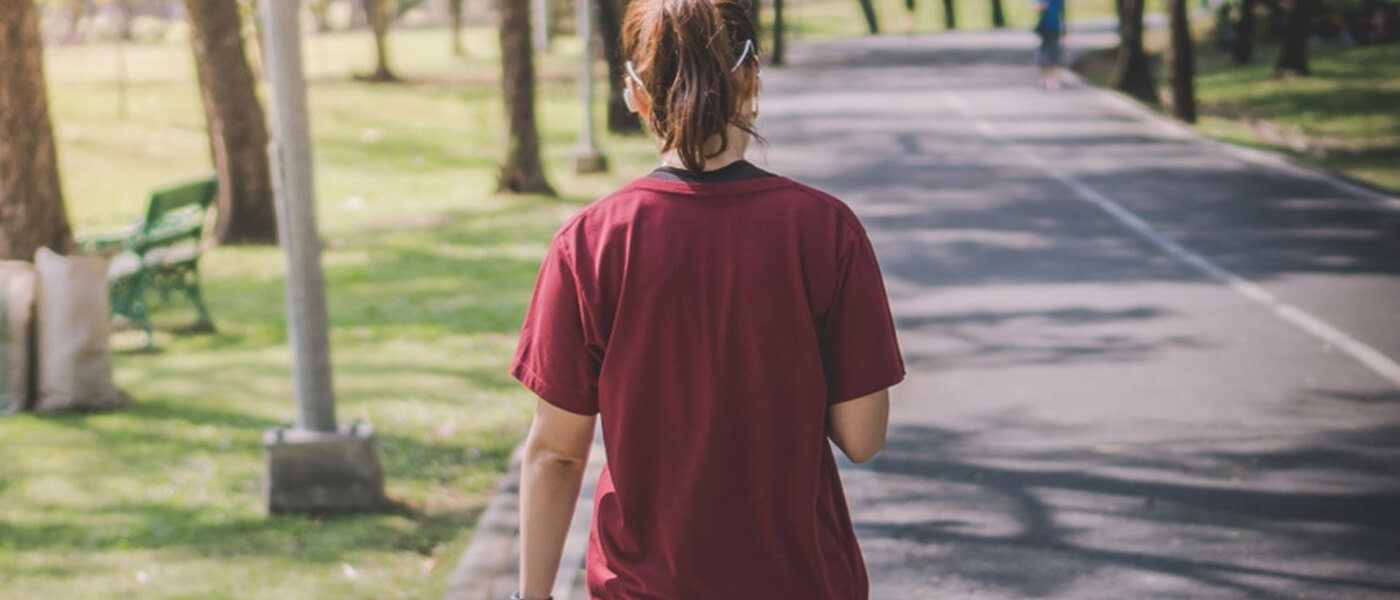
Beyond the city sights and the tall skyscrapers, there is certainly more to Singapore than just its iconic urban architecture. While we might not be blessed with tall mountains, the City in a Garden is true to its name with scenic trails and green corridors to discover all across the country. There are plenty of nature reserves and trekking trails filled with lush greenery and rich biodiversity to soak in some fresh air and be one with nature.
From trekking the Bukit Timah Nature Reserve to taking a boat ride to Pulau Ubin, here are some trails in Singapore that will let you escape the bustle of the city and get in touch with our green roots. Grab a friend or two and strap on your walking shoes, as we bring you our favourite hiking trails for you to set foot and discover a whole new side of Singapore.
1. Chestnut Nature Park
Chestnut Nature Park is in fact the largest nature park in Singapore. Located near Bukit Timah on the fringe of the Central Catchment Nature Reserve, this nature park spans across 81 hectares and is larger than 110 soccer fields. There are three hiking trails available for trekkers to explore the park and even includes a mountain biking trails for cycling enthusiasts. The scenic trails at the nature park are never dull with routes of various difficulty and it being a hotspot for bird watchers. You may even get a glimpse on some of Singapore’s rarer birds on your hike!
Click here on directions on how to get there.
2. Central Catchment Nature Reserve
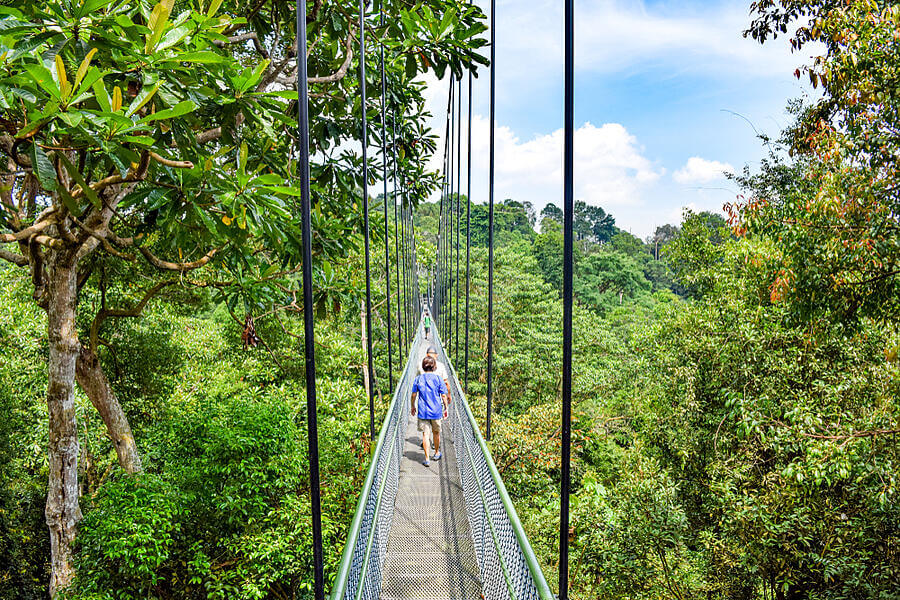
With Singapore being home to four nature reserves, the Central Catchment Nature Reserve is the largest one out of the four and spans over 2000 hectares. The nature reserve is well known as the country’s green lungs with a forest like no other. Take a trek through the reserve with its specially designed nature trails across the four reservoirs within it. The MacRitchie Reservoir Park is a great starting point for the 20km network of trails and boardwalk for hikers of all levels. Don’t miss out Jelutong Tower in the heart of the forest; be rewarded with a sweeping view of the Central Catchment Nature Reserve and the waters of MacRitchie Reservoir after climbing up the seven-deck observation tower!
Click here on directions on how to get there.
3. Bukit Timah Nature Reserve

Undoubtedly one of the most popular local hiking spots in the city, Bukit Timah Nature Reserve is the tallest natural hill with one of the most diverse species of plants, animal, and insect life in Singapore. For those who are geared for a good workout, the steep trek up to the summit will leave you wanting more. Due to the popularity of this trail, we suggest heading there during off peak hours to full enjoy the green experience this nature reserve has to offer.
Click here on directions on how to get there.
4. Southern Ridges
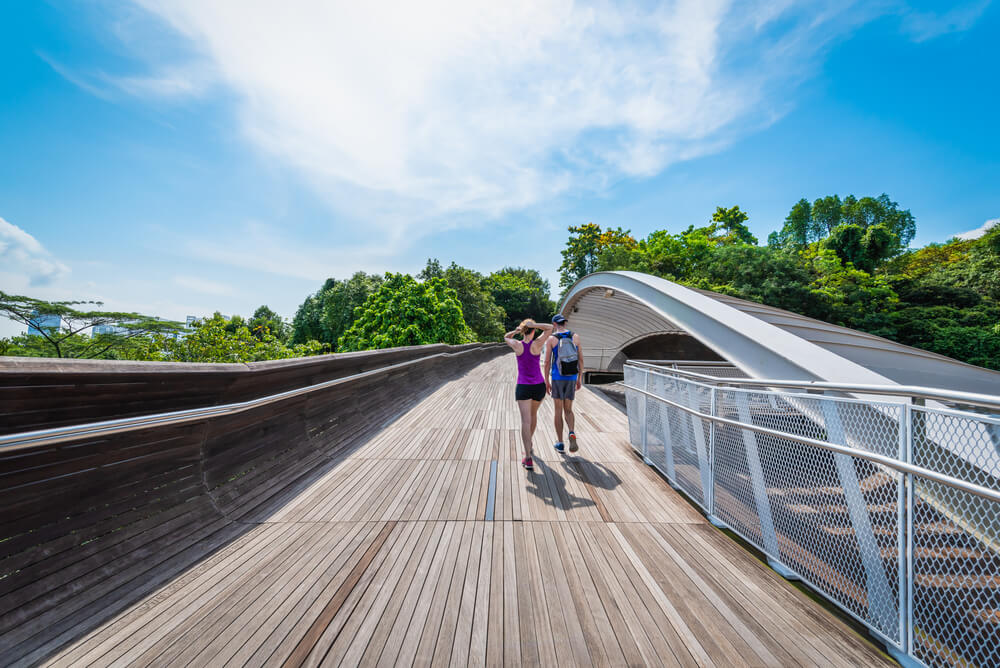
Home to panoramic views of the city, the Southern Ridges is a great option if you are looking to challenge yourself and conquer five parks (Mount Faber Park, Labrador Nature Reserve, Hort Park, Telok Blangah Hill Park and Kent Ridge Park) at one go! The entire trail spans across 10km and is definitely not for the fainthearted. But with every step you take, you can expect to be rewarded with a unique outdoor experience and to look forward to a stellar view of the harbour from Henderson Waves.
Click here on directions on how to get there.
5. Coney Island Park
A bird lovers paradise, don’t be surprised when you spot rare bird species such as eagles or owls at Coney Island Park. Visitors will be surprised to know that there are about 80 species of birds on this mangrove habitat and the park serves as a sanctuary for migratory birds!
The rustic green space in the North-East part of the city focuses on conserving energy and water and retaining the natural elements of the park. The Casuarina Exploration playground within the park is constructed out of recycled Casuarina trees, creating natural wooden bridges and log fences for kids to enjoy and soak in the nature vibe! Whether you are opting for a breezy walk or a cycle around this picturesque island, a trip on the island is great family time for an afternoon of fun.
Click here on directions on how to get there.
6. Pulau Ubin
Transport yourself back in time as you take a glimpse of what Singapore was like during the 1960s at Pulau Ubin. The little island is a 20-minute bumboat ride away from the main island and a gem in the east. Exploring the island on foot is very much possible with much to see!
Take a 40-minute trek to Chek Jawa Wetlands, an intertidal zone rich in biodiversity. The boardwalks meandering within the mangrove forest and the coastline brings you closer to the surrounding flora and fauna. Crabs and other living organisms unique to the mangrove and coastal habitat can be spotted as well, which makes a great learning experience for the entire family!
If a challenge is what you are looking for, take a hike up Puaka hill, the highest peak of Pulau Ubin. We guarantee a breath-taking view of the quarry awaits at the end of the steep hike!
Click here on directions on how to get there.
Go green even at home
As we take time out of our busy schedules and enjoy the health benefits brought about from trekking on these scenic trails, let us not forget the importance of preserving these green spaces for future Singaporeans.
Protect these natural landscapes with eco-friendly habits such as bringing your own water bottle for the hike and leave no trace behind by not littering and properly disposing your trash and recyclables. The green spaces that we enjoy today are through the conscious efforts of maintaining and advocating the importance of green in our day-to-day, and hence a trait we should pass on to future generations.
You can also do your part for the environment even in your daily life with your choice of electricity plan! Geneco’s Get it Green plan allows you to do so with 100% carbon-neutral electricity, so find out how you can power a more sustainable world here!
Image Credits: Nylon Coffee Roasters
Source: The Sustainability Project
References:
- [1] Ang, L.S, Oan, C (2020, June 21) Here’s what months of food deliveries and takeaways have taught us
https://www.channelnewsasia.com/news/commentary/plastic-zero-waste-byo-food-delivery-takeaway-resuable-container-12844324
Sustainable gift wrapping alternatives to wrap up this jolly season
- Home
- Residential
- Archive by Category "Blog" (
- Page 8 )
[Post Date]
Sustainable gift wrapping alternatives to wrap up this jolly season

Gifting and receiving a present is always exciting jolly time for everyone. The anticipation and excitement as you unwrap your gifts will always be a wonderful experience, be it for the young or old. As we approach the season of giving this year, let us take a look at how this gift exchange may be affecting our environment.
The challenge with gift wrapping
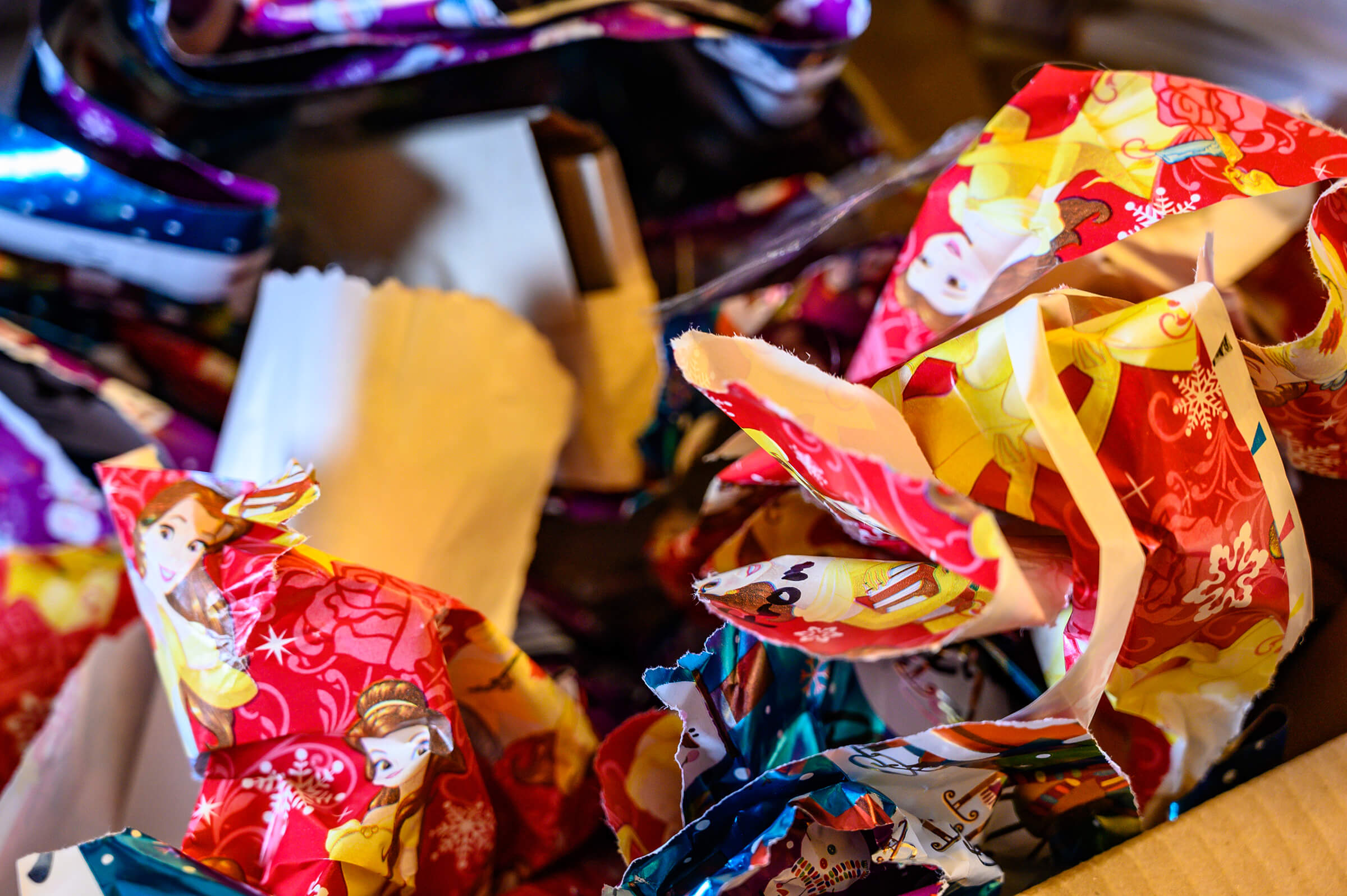
Everyone loves the feeling of unwrapping and tearing into their presents, but have you ever stopped to think about the amount of wrapping papers we use every year? According to statistics by the NEA, Singapore produced just above 1,000 metric tonnes of paper waste in 2019[1], which is hardly surprising, considering each individual receives about 5 to 6 presents every year. Multiply that by Singapore’s population number and the math easily adds up to a huge amount of wrapping paper used, simply on presents.
Not only do gift wrappers contribute to a huge amount of waste produced by the nation every year, they are also often dyed and laminated, and some even contained non-paper additives such as gold and silver colouring, glitter and plastics, making the paper unrecyclable[2].
With this in mind, here are some suggestions for you to consider the next time you plan on gifting someone a present, making it a greener and more sustainable one!
Wrapping paper alternatives

We’re spoilt for choice when it comes to going green in your gift wrapping! As long as you’re willing to get a little creative, you will certainly be able to find an alternative out there suiting your needs!
To start off, simply look around your home for discarded paper, fabric, and any materials that you no longer have use for and can still be used to be wrapped around your present. This may take the form of old newspapers, discarded packaging paper, plastic bags, or even used wrapping paper that you have received from others! Think of it as a scrapbook of wrapping paper that you can customise, decorate, and personalise for your loved ones.
If reusing old material doesn’t feel quite right for you, there are also plenty of recyclable wrapping paper options for you to consider. You may purchase Kraft paper that is fully recyclable[3] and biodegradable from stationery stores or the local supermarket. If not, simply visit one of the many arts and craft stores in Singapore selling colourful, yet recyclable paper for you to use for your presents.
Finally, for those who aren’t as artistically inclined as to design and wrap your own gifts, you can always consider used containers such as old cookie tins or tea boxes to house your gifts this year. This creative yet, hassle-free gift wrapping option also reduces unnecessary purchases of gift wrappers while upcycling items around the house.
Gifts that don’t require wrapping
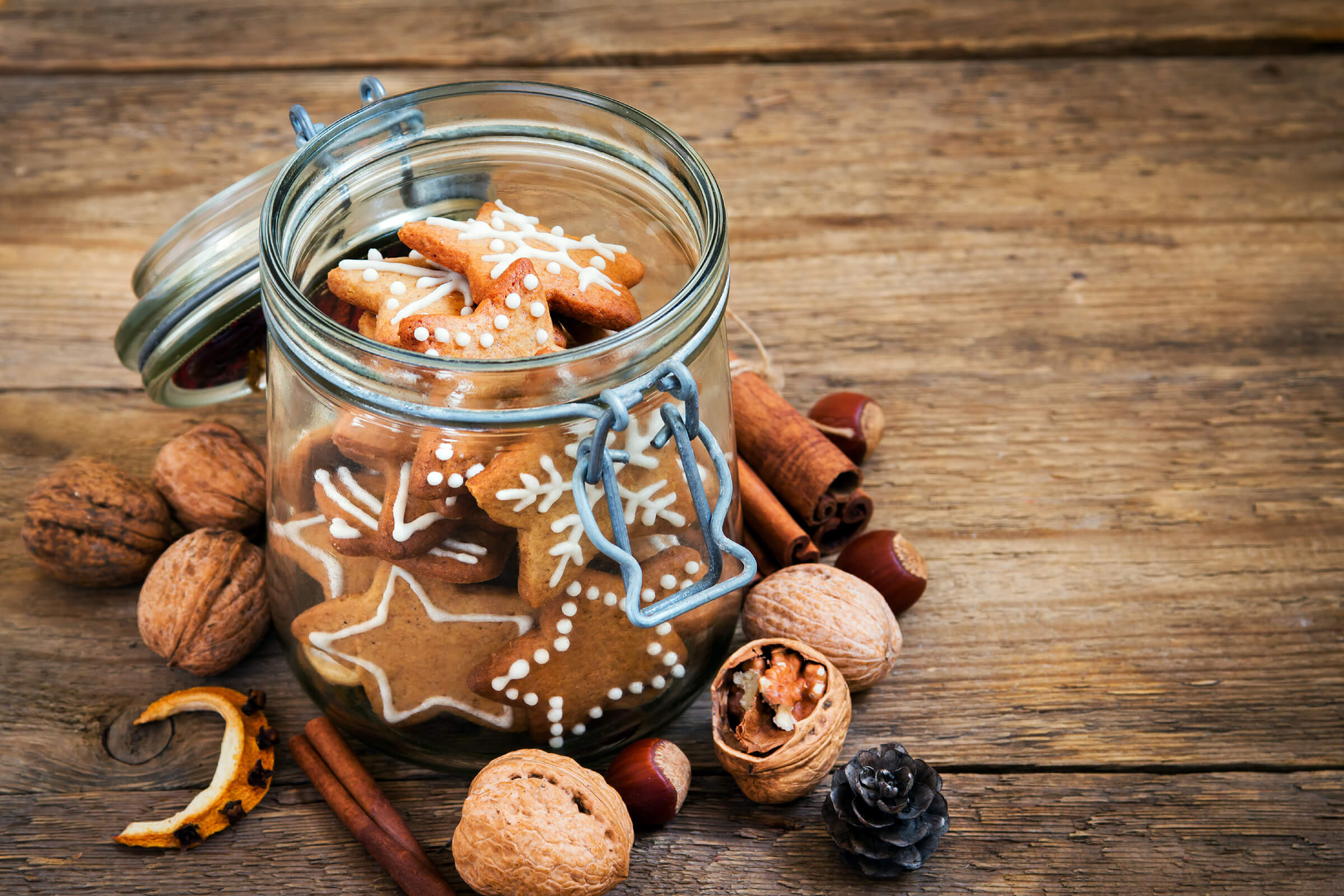
Avoiding using wrapping paper this jolly season does not just end at gift wrapping alternatives. Another way of giving without harming the environment is to consider presents that require no wrapping paper at all!
For instance, why not try your hand at baking or cooking this year? Cookies and pastries are great treats that everybody loves to indulge in regardless of the occasion, and we’re sure many would be touched by your homemade batch of brownies or cookies baked with love! Once you’ve done the work in the kitchen, simply pack the pastries in glass jars or Tupperware boxes, instead of disposable plastic boxes to store the food!
Alternatively, why not go for the gift of experiences instead of physical gifts? Take a family member or a friend out for their favourite meal or enjoy fun activities and have a nice catch up with them! This way, both you and your loved ones will be able to create fond memories and spend meaningful time together.
Wrapping Up

While glamming up presents in glittery and shiny paper feels luxurious, the true purpose of gifting ultimately lies in the sincerity towards your friends and family, letting them know how much you care for them. Even gifts wrapped in newspaper, or other eco-friendly materials will still surely be cherished by your loved ones, as long as they are gifts from the heart.
As the jolly season approaches, let us take the time to care not only for each other, but also for our planet and environment. If we can all take a moment to think about implementing more sustainable practices into our festive activities, we can gift ourselves the present of a cleaner, healthier environment and be #JollyTogether with the planet.
References:
- [1] NEA. (2019), Waste Statistics and Overall Recycling
https://www.nea.gov.sg/our-services/waste-management/waste-statistics-and-overall-recycling - [2] Green is the New Black. (2020, 17 Nov), 8 Conscious Crafting Tips and Tricks for the Holidays!
https://greenisthenewblack.com/sustainable-gift-wrapping-and-conscious-crafting-ideas-for-christmas/ - [3] Hongmei. What is Kraft Paper?
https://www.hongmei.com.sg/products/kraft-paper-supplies-singapore/
Image Credits: Nylon Coffee Roasters
Source: The Sustainability Project
Our guide to taking the entire family on a green virtual vacation
- Home
- Residential
- Archive by Category "Blog" (
- Page 8 )
[Post Date]
Our guide to taking the entire family on a green virtual vacation

With the end of 2020 fast approaching, many of us may find ourselves out of our usual routine of planning for our long-awaited end-year vacations during this time of year. From finding the best flight ticket and accommodations deals, to marking down the city’s must-eats for a gastronomic experience, the thrill and excitement of a holiday is definitely missed.
But that does not mean that escaping into a different country is entirely impossible. Even though Singapore and Hong Kong have launched the air travel bubble, virtual travel has demonstrated to the world with new possibilities in deep diving into a new culture in any foreign cities. Not only does it reduce the amount of carbon footprints caused by air travel, it has also eased air pollution around the world[1]. So, what better time than now than to experience a technology that some experts have advised as an eco-friendly solution to the problem of overtourism?[2]
In view of everyone’s health and safety, curb the wanderlust fantasies and possibly bring the holiday experience right into your homes. We have put together a guide in creating that perfect virtual holiday for your family where not only is the act itself eco-friendly, but it gives you a chance to breathe second life into the items around the house. Once you are fully immersed in the entire experience, we guarantee a ball of a time of family fun!
1. Plan where to go
As with any holiday, a location is required. This time round, the world is your oyster and exorbitant plane tickets are the least of your concerns. You might have a destination already in mind, but if you are undecided, here are some off-beat options to explore from the usual favourites.

Immerse in South American history right up at Machu Picchu
A view like no other, experience the mystical place of Machu Picchu. Nestled in the Andes Mountains, the symbol of the Incan Empire is more than 7,000 feet above sea level and a sight to behold. Take a virtual tour of this UNESCO World Heritage Site from the comfort of your home as you discover Incan history without the altitude sickness.
Discover the Pharaoh’s tomb at the heart of the Great Pyramid of Giza
Transport yourself back in time to Ancient Egypt and be an archaeologist for a day as you dig deep into pyramids and tomb. Built over four and a half thousand years ago, the Great Pyramid of Giza is the tomb of the Pharaoh Khufu. Be awed by the science and precision of this historical masterpiece as you crawl through the secret chamber. The 360 virtual experience by BBC will take you pass through the walls into the very core of the Pyramid.
Journey through a South African safari in Kruger National Park
Get up close and personal with friends of the wild right in a world-renowned national park. Kruger National Park offers a full-blown safari into your home with their tours where you get a wildlife experience and to be able to observe lions, rhinos, tigers and bears up close. Safari vehicles head out into the wild twice a day for live safari tours where expert rangers take you onto the terrains of the national park to bring you a first-class experience.
*Catch the LIVE sunrise safari and sunset safari tours here at WildEarth at their respective timings
2. Set the stage
To really make it feel like you and your family are heading for a trip, consider getting everyone on board and decorating a part of the house to reflect the unique points of your selected destination.
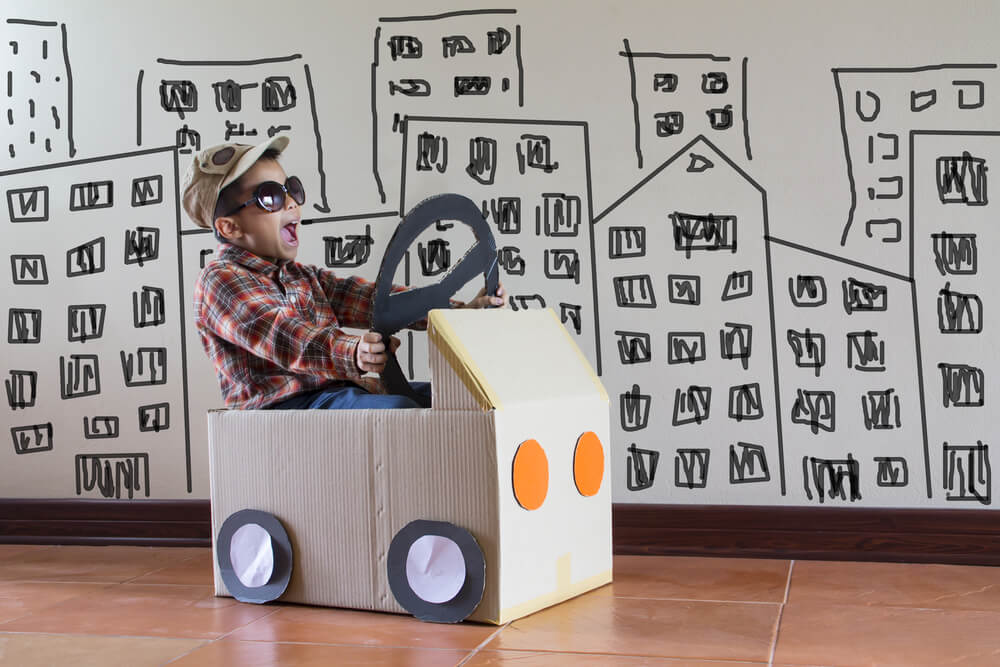
A fun way to engage the children to be a part of this project will be to have them craft the backdrop of your selected city. Make use of old cardboard boxes or unwanted materials around the house by turning into key landmarks of your location such as pyramids in Egypt of llamas in Peru. Gather items from around the house and challenge them to upcycle and create the perfect stage for your holiday
Alternatively, if creating a physical background might be too daunting, Snapchat and Instagram filters are a great way to transport everyone to your desired location. Make it a full photoshoot moment and have fun with posing from the comfort of your home while imagining you are at the peak of Mount Fuji or climbing the Great Wall.
3. Dress the part
Just because you are at home, does not mean you have to be in your pajamas for your entire ‘trip’. Bask in the full fun of travelling from home by dressing up and putting on your favourite vacation outfit. Don that safari hat or throw on your favourite hiking gear certainly livens up the mood and creates that nostalgic feeling of pre-flight jitters before going on a trip. Afterall if dressing up the part affects the way we feel, it may just help bring about vacation excitement!
4. Taste the local delights
Food is certainly one of the best parts of any holiday. It reflects the essence of any city and its culture and most often, one of the most unforgettable parts of any trip. This is certainly something you must not miss out on your virtual holiday!
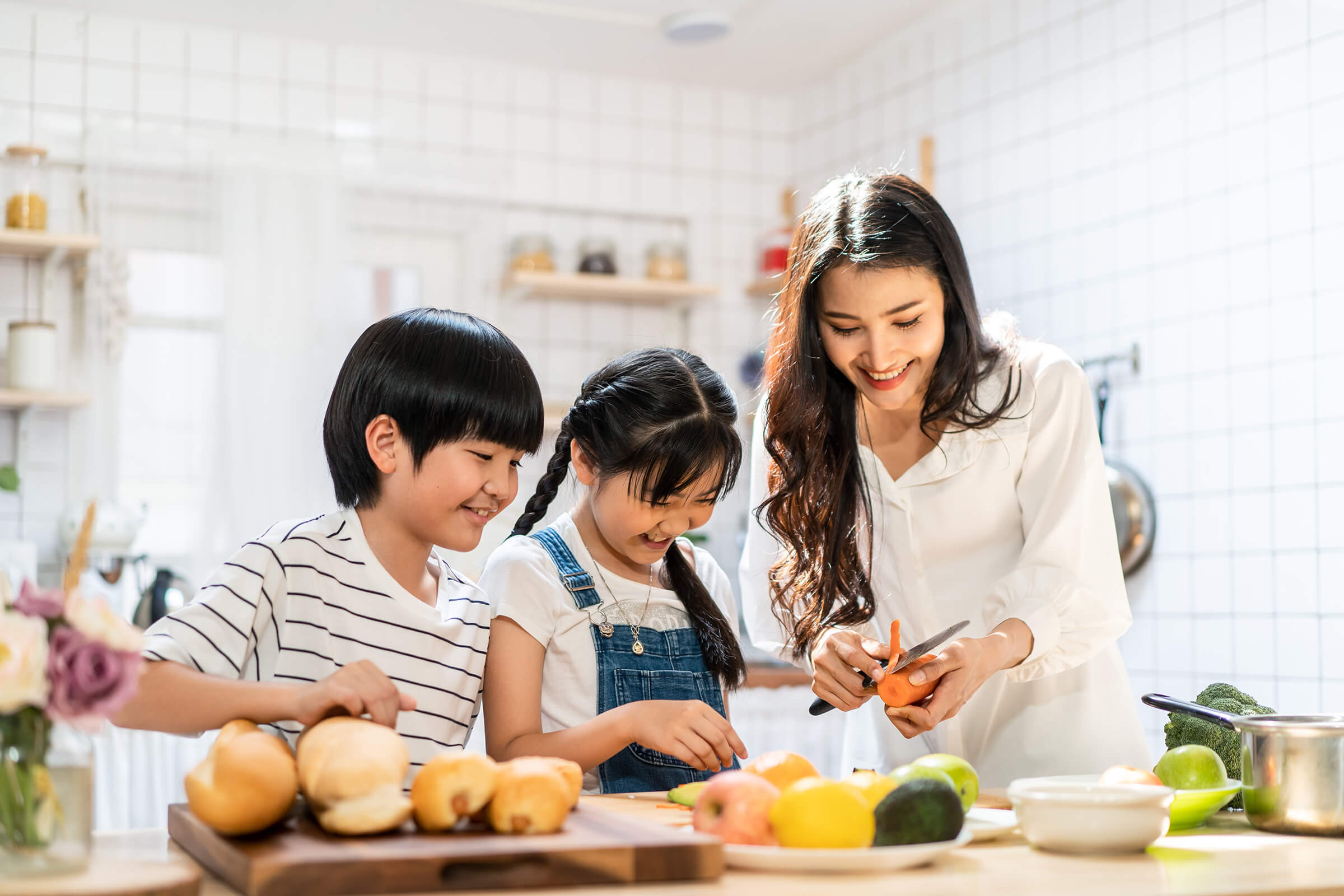
Avoiding using wrapping paper this jolly season does not just end at gift wrapping alternatives. Another way of giving without harming the environment is to consider presents that require no wrapping paper at all!
For instance, why not try your hand at baking or cooking this year? Cookies and pastries are great treats that everybody loves to indulge in regardless of the occasion, and we’re sure many would be touched by your homemade batch of brownies or cookies baked with love! Once you’ve done the work in the kitchen, simply pack the pastries in glass jars or Tupperware boxes, instead of disposable plastic boxes to store the food!
Alternatively, why not go for the gift of experiences instead of physical gifts? Take a family member or a friend out for their favourite meal or enjoy fun activities and have a nice catch up with them! This way, both you and your loved ones will be able to create fond memories and spend meaningful time together.
Wrapping Up

To spice things up, have a go at recreating some of the dishes from your destination’s local cuisine. There are plenty of online recipes that can give you a taste of your selected city. If your heart is in Paris, some pastries and croissant from your local bakery will do the trick. If Thailand is your location of choice, make full use of the local produce and whip up some Basil Chicken with rice. One of Geneco’s ChangeMaker Comcrop has locally grown basil that adds the flavour that is just needed in the dish.
Ultimately, food is a great way to complete the full virtual holiday experience while transporting your tastebuds to another part of this world.
While an end-year family vacation may be a dream for now, make no mistake in creating your own family fun from the comfort of your own home with this guide on having your own virtual holiday. It truly is the perfect green alternative for your family to have a get-a-way and take a peek at some of the destinations around the world. This way, you not only get to reduce on your carbon footprint, but to experience a whole new culture from the comfort of your home. With the advent of technology in modern times, we are sure this experience can only get better!
References:
- [1] Kommenda. N, Watts. J. (2020, March 23), Coronavirus pandemic leading to huge drop in air pollution,
https://www.theguardian.com/environment/2020/mar/23/coronavirus-pandemic-leading-to-huge-drop-in-air-pollution - [2] (2019, March 25), How Technology Can Help Us Tackle Overtourism,
https://www.cntraveler.com/story/how-technology-can-help-us-tackle-overtourism
Image Credits: Nylon Coffee Roasters
Source: The Sustainability Project
Going green with your home office
- Home
- Residential
- Archive by Category "Blog" (
- Page 8 )
[Post Date]
Going green with your home office

Working from home may be a semi-permanent fixture for most of us now having stayed at home for a good majority of the year. Having a dedicated workstation is thus important since it can do wonders in ensuring we stay on track with our work while at home. A sustainable home office is a great example of how easy we can merge zero-waste and daily work together as we carve out that personal workspace. Not limited to just being beneficial to our health and well-being, it further ensures we are doing our part in advocating for a more sustainable lifestyle choice.
Here are some tips to help you in creating a sustainable green home office.
1. Cut off energy vampires
Your electronic devices such as your laptops, computers, and speakers, are using up energy even when not in use. When not turned off entirely or left to run on standby mode, these items are slowly draining energy in the background by responding to commands or performing updates even when not actively engaged by a user, and can suck up large amounts of electricity.
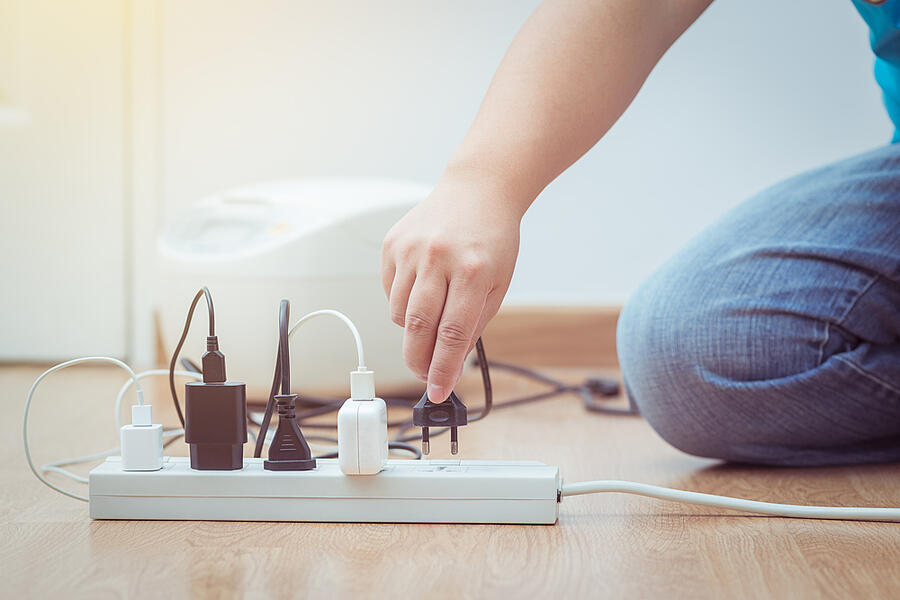
To prevent wasting your electricity usage, unplug your devices at the end of the workday. This way you not only do good for the earth but for your pocket as well.
2. Office plants
Bring the great outdoors inside! Another way to make your home office green is to fill your space with houseplants. They are easy on the eyes and a brilliant way to improve your air quality thanks to their ability to purify the air.
Some plants like orchids and succulents even continue emitting oxygen at night, making it safe to house them indoors[1]. Having indoor plants in your room can even help to reduce stress and create a peaceful environment, which can benefit your productivity and mental well-being as well.
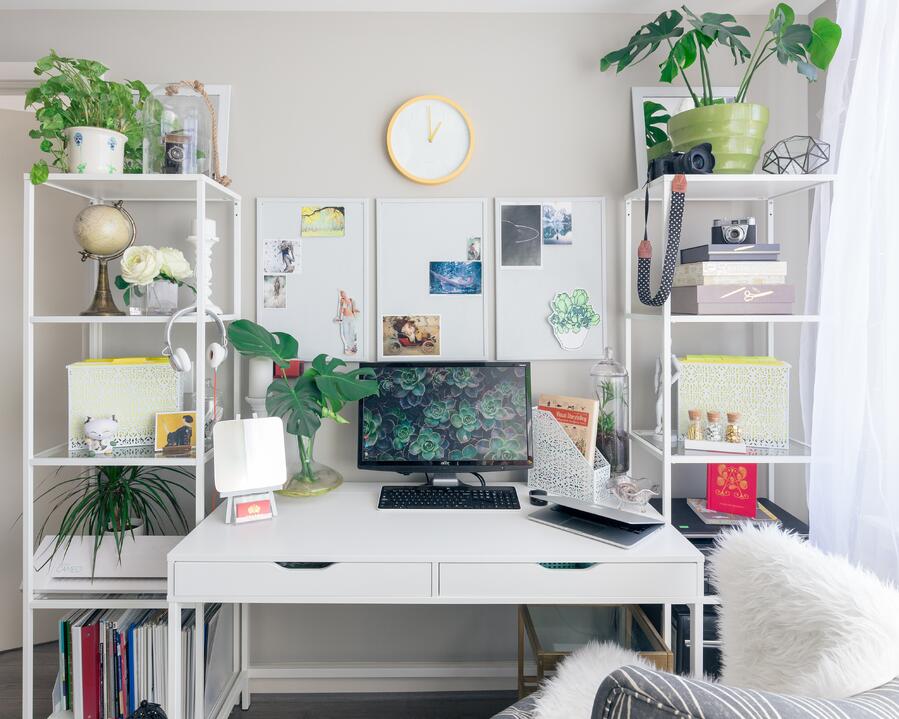
Worried that you may not have any green fingers? There are plenty of low maintenance plants that require little care which are perfect for beginners or people with busy schedules. Some of them include the English Ivy, Snake Plant or even our local favourite, the Money Plant.
3. Go digital
A total of 1,011,000 tonnes of paper waste was disposed by Singaporeans in 2019[2]. This is the third largest amount of waste generated among the various types of waste generated in the country.
With the advent of technology, keeping things digital and going green in the office has become accessible and easy. Use your electronic devices for most of your transactions like online billing, invoicing and payments. It can also be as easy as filing work documents digitally on electronics instead of having physical folders, or reviewing them on-screen rather than printing out. If you must use paper in the office, consider if it is possible to reuse misprints to reduce the need for a fresh sheet.

One of the ways Geneco is doing their part for environment is to only issue e-bills and have gone paperless since its inception. This helps reduce the unnecessary carbon footprint incurred from paper bills and postage mailing. A small move to phase out physical bills is a huge step towards a better world. We even have a guide to help you understand your Geneco e-bills to ensure a hassle free process!
4. Skip single-use stationery
Whenever you run out of pen ink or are looking for stapler refills, the first thought will usually be to head for the supplies closet to retrieve a new batch of stationery. Instead of being dependent on these disposable office supplies, choose to reuse and opt for sustainable options.
Choose refillable pens or staple-less staplers to reduce your consumption and the amount of waste generated. You will be even surprised to know that there are plantable pencils in the market that are designed to be planted once they are of unusable length. To complete building your own eco-friendly home office, you could even try to adopt a plastic-free routine as you go about your daily tasks.
5. Make the most of natural light
Selecting a workspace that has a window to allow natural light in is a great way to go green in your home office as well. This way, you save on your energy consumption by minimising the use of unnecessary lighting and get to enjoy the health benefits of Vitamin D which can improve your quality of sleep and productivity levels.

When optimum use of natural lighting is not possible, ensure your workplace is well lit by opting for an energy-efficient LED desk lamp. Not only do they not strain your eyes, they also consume 80 per cent less electricity and have longer lifespan than halogen bulbs[3].
Going green has never been easier, especially at work. It is a great way to keep individuals happy, healthy, and productive at the same time. Transform your home office into a green one today or challenge your colleagues to adopt sustainable practices for their own home office. You could even take it a step further to going green for your home by checking out Geneco’s Get It Green plan! At only 17.45cts/kWh, reducing your carbon footprint is both simple and affordable!
Share your ideas with one another on how to maintain a green office at home and power the change together!
References:
- [1] (2018) Orchid Republic. Do Succulents Produce Oxygen?
https://orchidrepublic.com/blogs/news/do-succulents-produce-oxygen - [2] (2019) National Environment Agency. Waste Statistics and Overall Recycling
https://www.nea.gov.sg/our-services/waste-management/waste-statistics-and-overall-recycling - [3] Ng, H.W. (2018, October 27) The Straits Times. More efficient lamps to light up go-green efforts
https://www.straitstimes.com/singapore/more-efficient-lamps-to-light-up-go-green-efforts
Image Credits: Nylon Coffee Roasters
Source: The Sustainability Project
What is the true cost of e-commerce shopping on the environment?
- Home
- Residential
- Archive by Category "Blog" (
- Page 8 )
[Post Date]
What is the true cost of e-commerce shopping on the environment?
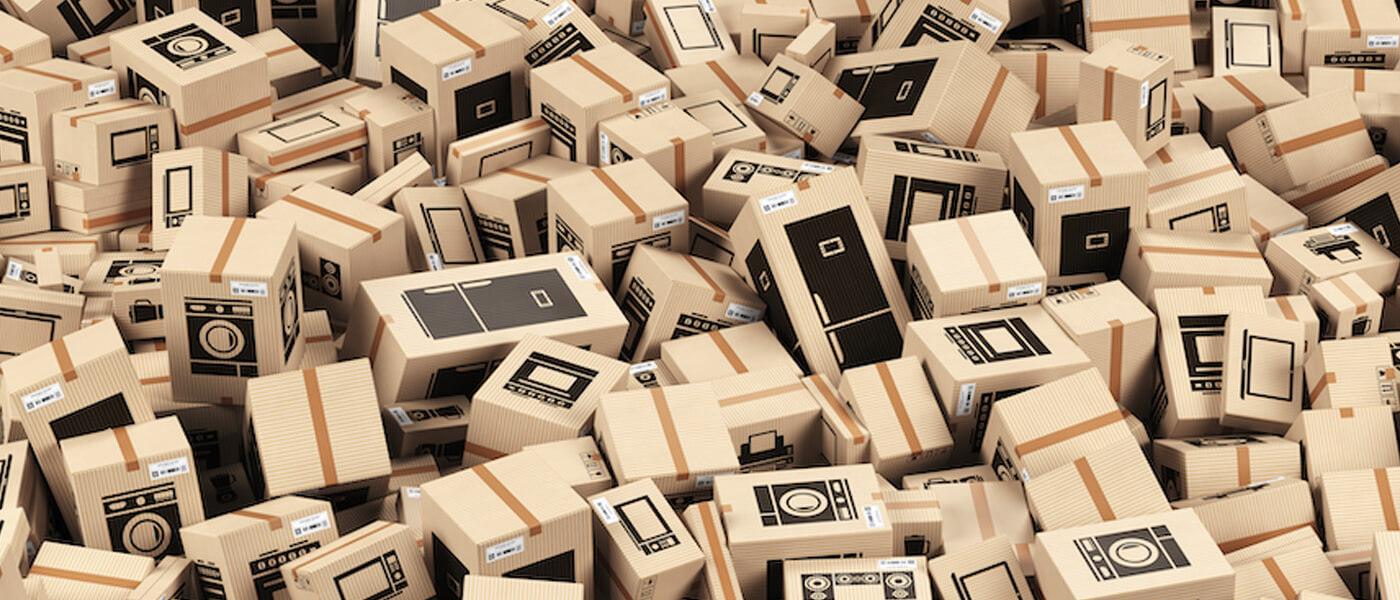
With the recent series of online shopping events, such as the 9.9 and 10.10 sales, as well as the upcoming 11.11 Singles Day sales, the popularity of retail e-commerce activity is becoming increasingly widespread every day.
In Singapore, online retail sales takings in January 2019 stood at over $201 million[1], and is expected to double by 2022 from 2017 figures, according to CIMB’s Research. Southeast Asia’s e-commerce market was worth $31.5 billion in 2018 and is projected to hit $138.5 billion by 2025.
Added on with the COVID-19 preventive measures, the number of online purchases made by Singaporeans have also increased dramatically over the past few months.
However, is this good in terms of sustainability and environmental conservation? Let us weigh the benefits and environmental impact of physical and online retail.
The Good
The good news for shoppers who prefer e-commerce options is that they generally produce less greenhouse gases and emissions than those who travel physically to the store to browse and purchase their goods – yielding a carbon footprint about 50% lower than that of the traditional shopper.
According to research, about 3.1kg of CO2 is yielded per customer journey whereby the travelling to the stores itself accounts for about 75%[2] of greenhouse emissions in the entire shopping process via the various modes of transportation, while the remaining emissions come from packaging, overheads of displaying the goods and running the store, and returning items.
The Bad
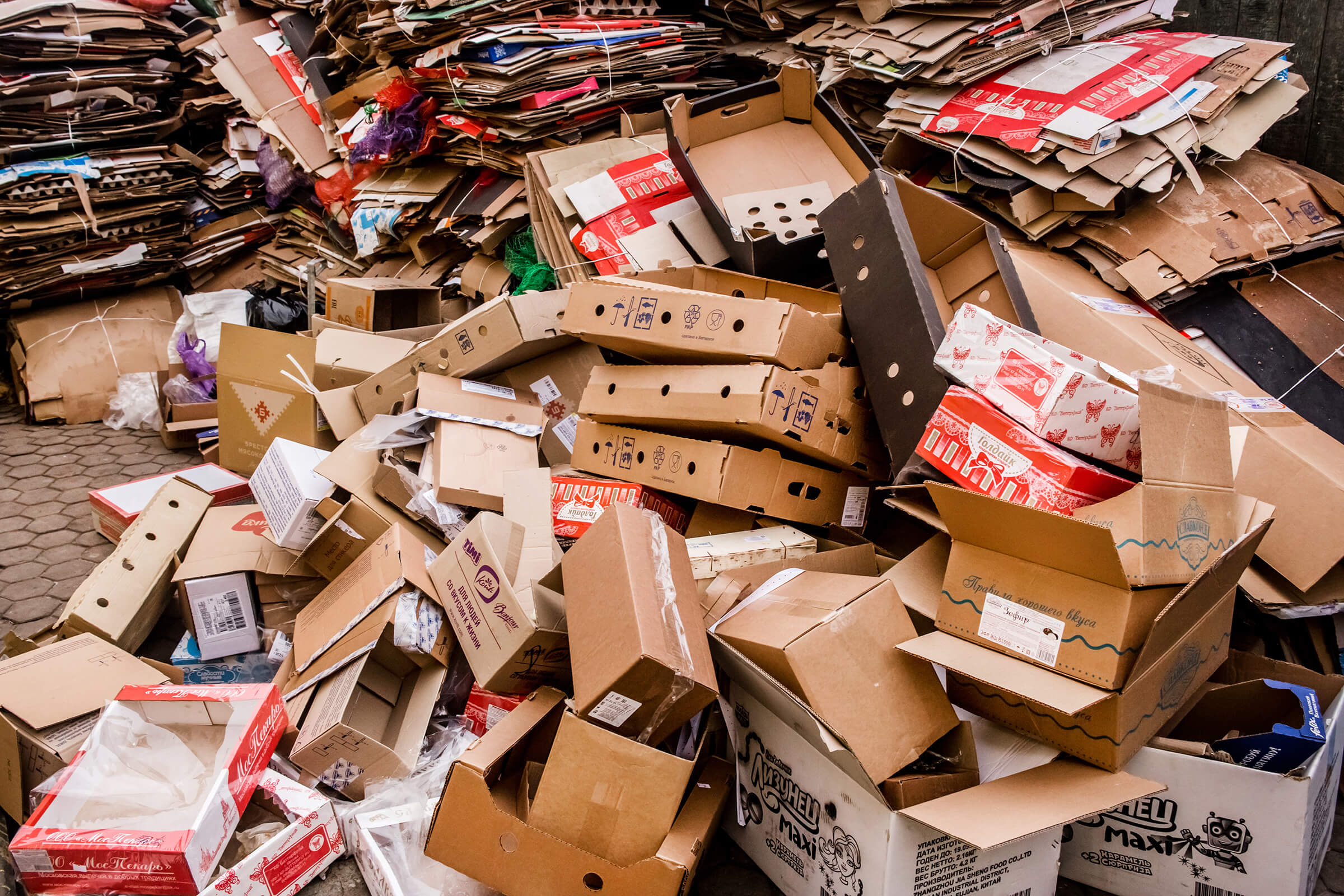
However, even without travelling physically, there are still many factors that can contribute to increased greenhouse gas emissions and carbon footprint produced by e-commerce activities.
The most common and serious form of waste from e-commerce comes from the packaging involved in the entire process. Anyone who has received a parcel from an online purchase will likely attest that their products are usually packed in an excessive mix of cardboard and plastic used to minimise damages. The amount of cardboard used for the 165 billion[3] packages shipped in the US yearly accounts for more than a billion trees alone, almost equivalent to 350,000 hectares of land, which is about five times the size of Singapore.
Another major source of waste and carbon emissions stems from the process of returning or exchanging products purchased online. This process is usually free, and customers have taken advantage of it – with the return rates of e-commerce products spiking by 95%[4] over the last five years. By having the product shipped back to the supplier, replaced, repackaged, and then re-shipped back to the customer, the entire process produces up to 2 to 3 times more emissions than it would for a single journey. Returns in the US alone accounts to more than 2 billion kilograms of landfill waste and 15 million tonnes of carbon emissions every year.
So what can you do?
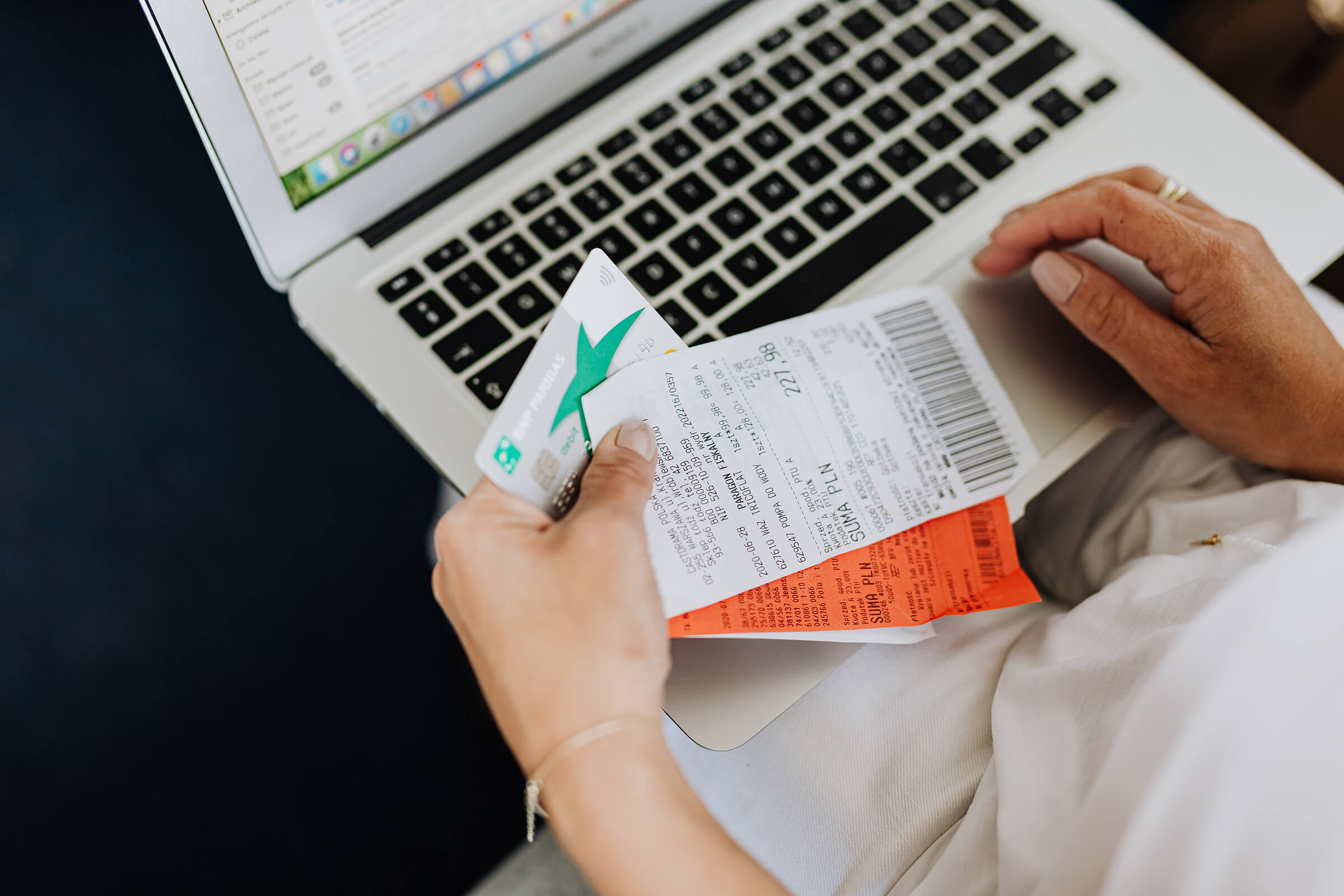
Despite the many ways for e-commerce to create a massive carbon footprint and waste, there are also plenty of sustainable habits we can practice for our online activities:
1. Don’t buy on impulse
Take your time to consider the item you’re purchasing and eliminate any potential chance to return your product. Check out the reviews or do your research to help your purchase decision. By ensuring that your product makes only one trip to your home, you’ll be reducing the carbon footprint of your purchase, contributing to a more sustainable environment.
2. Avoid Express Shipping
Avoid the “express delivery” option for your purchases. Doing so will allow companies to consolidate more orders and their products together into one shipment instead of multiple shipments for single items, hence driving efficiency and reducing emissions.
3. Choosing to go green
Consider retailers and services that provide the possibility for a greener e-commerce journey. For instance, there are several brands that have made the swap from poly mailer bags to biodegradable ones, making use of 100% recyclable paper bags in a bid to reduce its carbon footprint without compromising on customer experience. Alternatively, you can support local initiative such as Package Pals, which collects single-use packaging from Singaporeans either via collection or by mail before redistributing them to retailers for re-use.
A collective effort
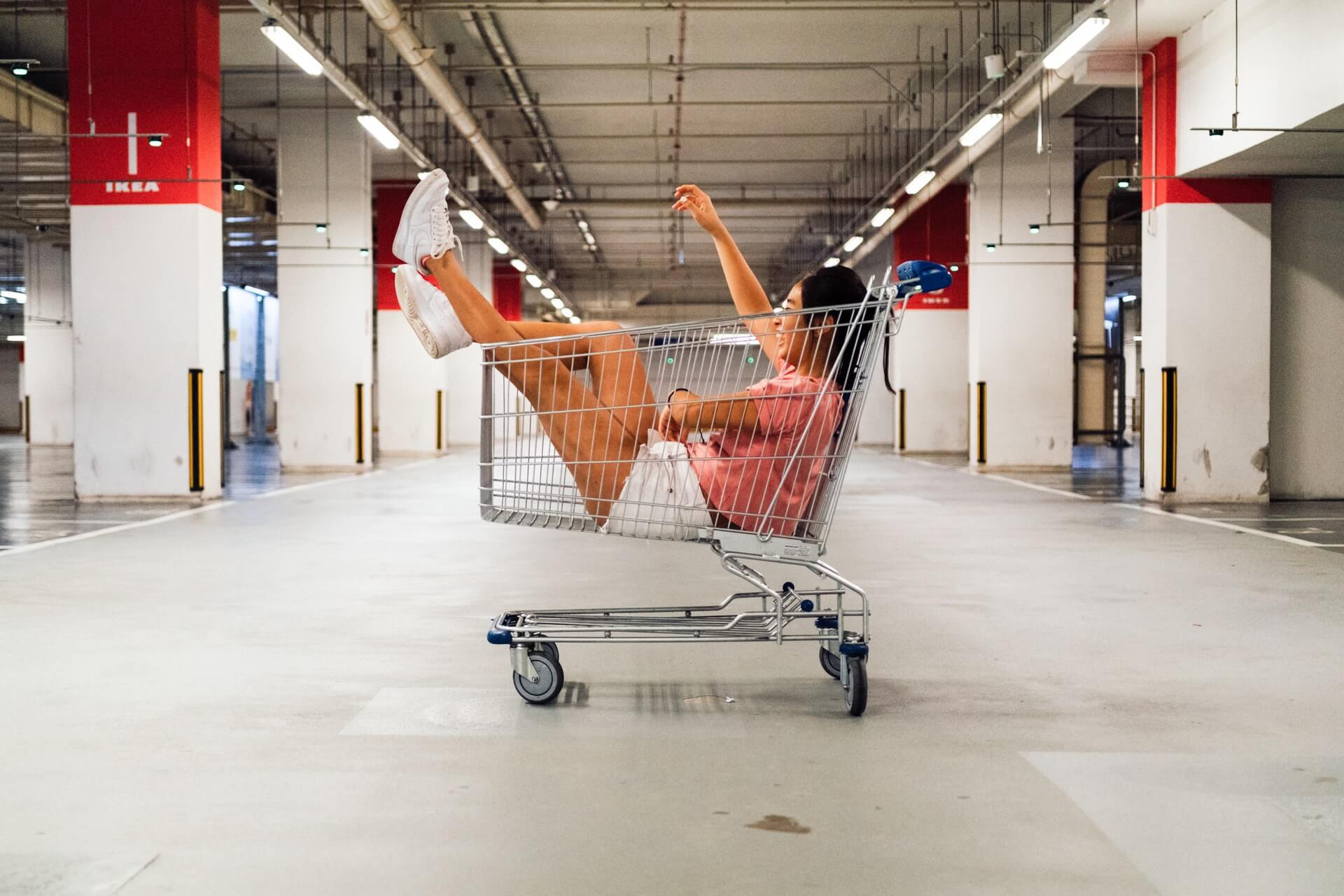
While we embrace the convenience of e-commerce as they become the more prevalent method of shopping, there are plenty of resources and initiatives available online helping us to make this process a sustainable one, as it should be and was meant to be.
With a little effort, we have everything we need to change the landscape of retail and consumerism, so what’s stopping you from becoming a greener shopper?
References:
- [1] Chong, D (2019, April 19) War on Waste: The dirty (brown) secret about e-commerce
https://graphics.straitstimes.com/STI/STIMEDIA/Interactives/2019/04/earth-day-online-shopping-packaging-waste-fails/index.html - [2] Jiang, E (2016, November 23) Is E-Commerce Really Better For the Environment Than Traditional Retail?
https://www.businessoffashion.com/articles/intelligence/is-e-commerce-really-better-for-the-environment - [3] Chong, D (2019, April 19) War on Waste: The dirty (brown) secret about e-commerce
https://graphics.straitstimes.com/STI/STIMEDIA/Interactives/2019/04/earth-day-online-shopping-packaging-waste-fails/index.html - [4] Schiffer, J (2019, July 30) The unsustainable cost of free returns
https://www.voguebusiness.com/consumers/returns-rising-costs-retail-environmental
Image Credits: Nylon Coffee Roasters
Source: The Sustainability Project
Everyday items you never knew you could recycle
- Home
- Residential
- Archive by Category "Blog" (
- Page 8 )
[Post Date]
Everyday items you never knew you could recycle
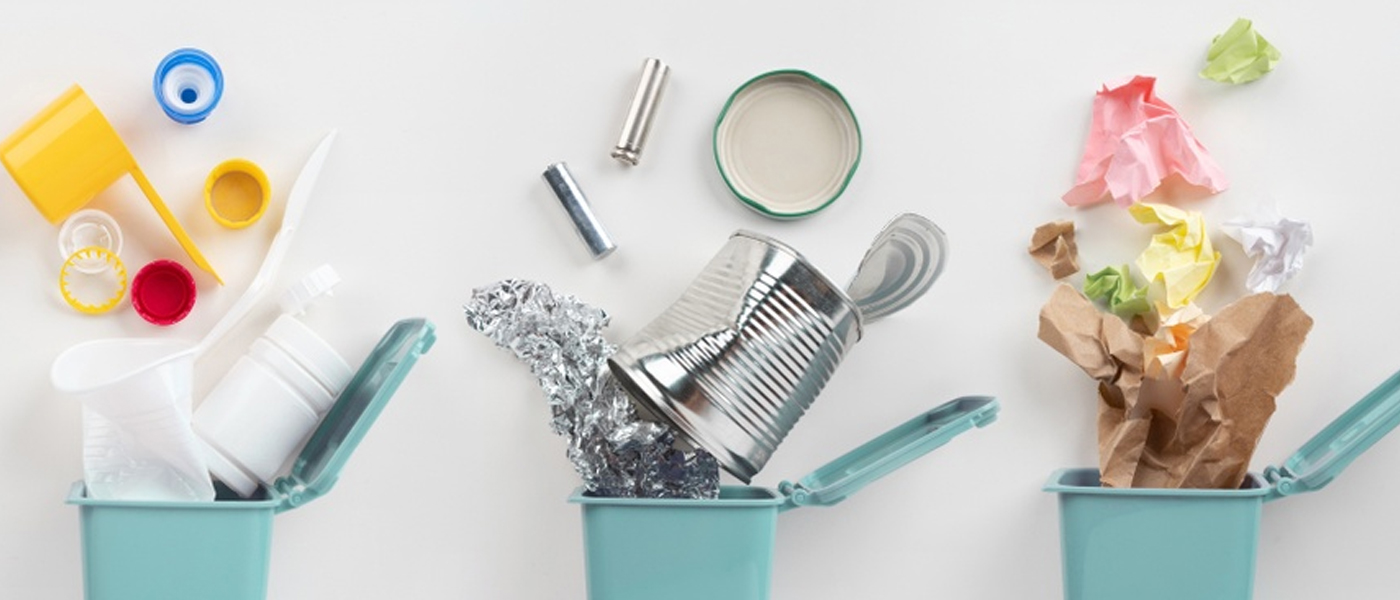
As the habit of recycling at home steadily gained traction in Singapore, you might be familiar with the usual recyclable items around the house such as cardboard boxes, plastic bottles and aluminum cans, and how to go about recycling them. There is certainly more to the list and you might be surprised by some unexpected ones. Here are some additional items at home you never knew you could recycle as well.
Light bulbs and lamps
Light bulbs are considered a form of e-waste and can be recycled. Due to the nature of the product, they cannot be deposited into the common recycling bins located within the residential areas. With most lamps and light bulbs being mostly made up of glass, metal and limited amounts of mercury, improper disposal could lead to contamination.
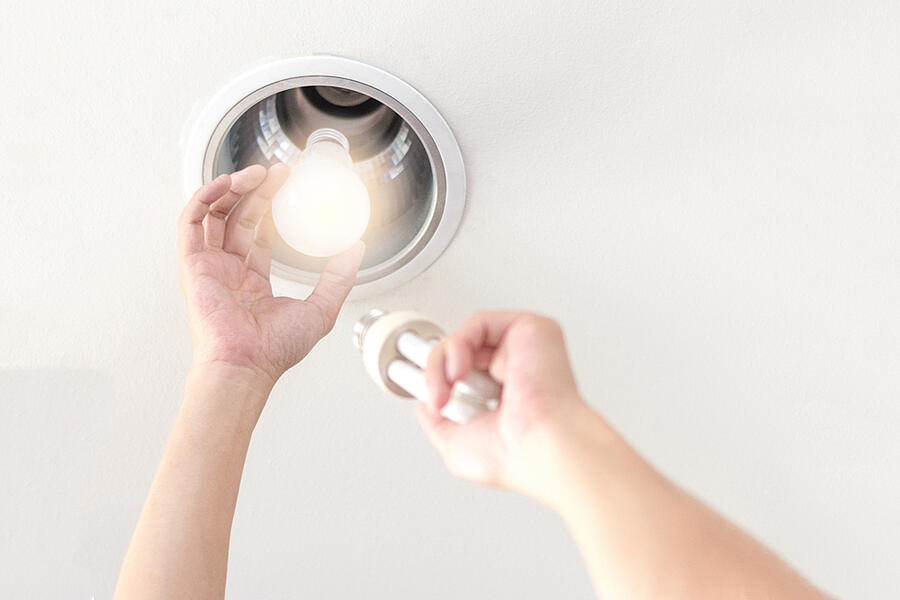
What to do: Check in with your neighbourhood community centres if they have a collection point for faulty light bulbs and lamps to be recycled by professionals.
Aerosol cans
Face mist, paint sprays, insecticides and hair sprays – these everyday household items can come in the form of aerosol cans. Aerosol containers or spray cans are pressurised products that can start a fire or cause injuries when you dispose them in the trash where they can be punctured and explode.
What to do: Empty the aerosol cans before recycling them in our common neighbourhood recycling bins. An empty spray can is safe for disposal if you no longer hear air being released from the container when the nozzle is pressed.
Portable chargers and electrical cables
With our phones constantly by our side all the time, you can imagine how important it is for it to have sufficient battery life. As such, portable chargers and electrical cables have become almost indispensable in our everyday lives.
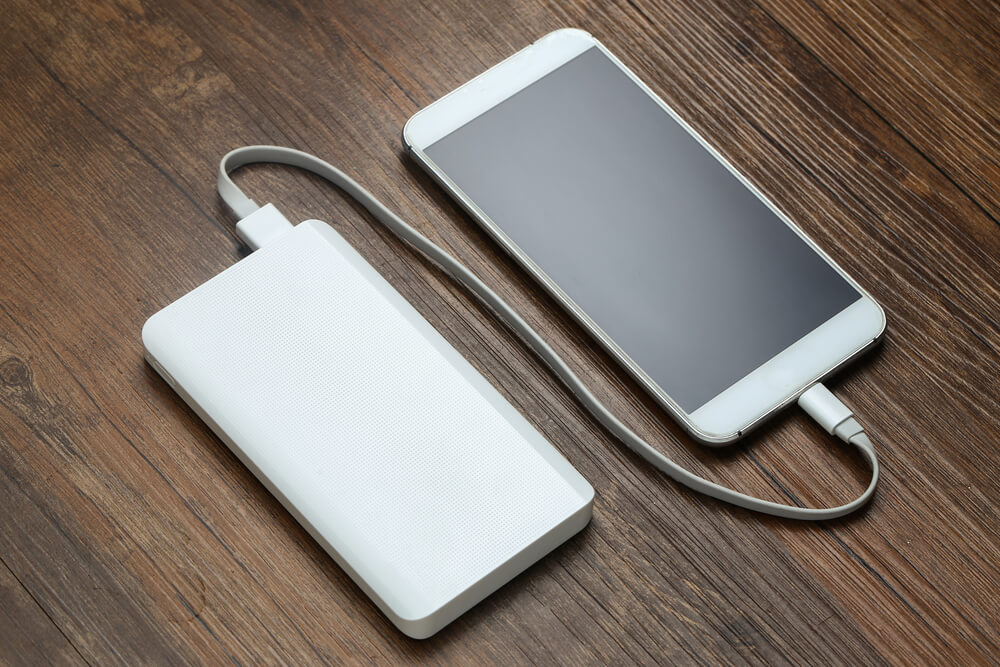
With daily use, wear and tear is expected much like any other household items. Consider if it is possible to have it repaired with your local repairman or to do an exchange with the manufacturer.
What to do: Should throwing out be the only available option, don’t be too quick to bin it as these items can be recycled as e-waste. Check out these locations where cables and portable chargers can be recycled!
Spectacles
According to the World Health Organisation, at least 2.2 billion people have a vision impairment or blindness, of whom at least 1 billion have a vision impairment that could have been prevented[1]. By recycling your unused glasses, it is a great way to put your old glasses to good use while making a difference in enabling the vision of those in need.

What to do: Do a quick check for local optical shops which collect or trade in old spectacles. One such optical shop is Visio Optical, who runs an eyewear collection programme where everyone is encouraged to donate their old or new spectacles and sunglasses that are in usable conditions. The glasses will then be reworked and offered to people with financial difficulty unable to access or afford quality eye care, providing them with proper prescription glasses.
Being able to recycle these unexpected household items, it broadens the perspective of how we view recyclable items to not just be confined to the usual suspects. The next time before you bin something, do a quick check with this list if it can be recycled.
As sustainability becomes more of a necessity with the increasing urgency of climate change, it’s time we practice more mindful habits to leave the world in better hands for the generations after us.
References:
- [1] (2019) World Report on Vision. World Health Organisation.
https://www.who.int/docs/default-source/documents/publications/world-report-on-vision-accessible-executive-summary.pdf?sfvrsn=d159ec9f_2
Image Credits: Nylon Coffee Roasters
Source: The Sustainability Project
Understanding Food Waste in Singapore: What Can We Do to Help?
- Home
- Residential
- Archive by Category "Blog" (
- Page 8 )
[Post Date]
Understanding Food Waste in Singapore: What Can We Do to Help?
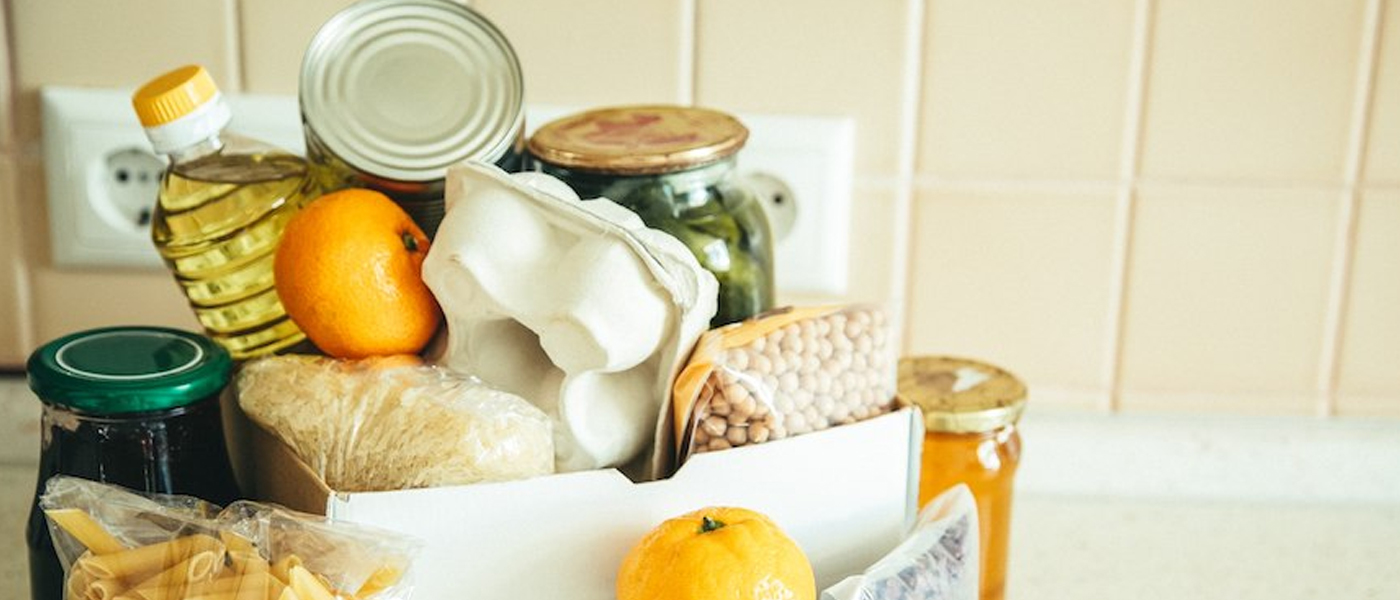
We all have memories of our parents telling us not to waste food when we were younger. However, the issue of food waste in Singapore expands far beyond simply finishing food left on your plate. According to statistics provided by the National Environment Agency (NEA), Singaporeans disposed 744 million kilograms of food in 2019. Putting this into context, that’s about 2 bowls of rice per person wasted every day, or 51,000 double decker buses of wasted food generated every year[1]!
Our nation’s trend on food waste is on a worrying rise, with the amount increasing by about 20% over the past 10 years[2]. This figure is also expected to increase, alongside our nation’s growing population and economic activity.
To find out how we can address this unhealthy trend, an understanding of Singapore’s most typical avenues of food waste must first be reached.
How is food in Singapore wasted?
With our nation’s love and passion for food, it is no surprise that Singapore’s food waste emerges from all avenues along its supply chain. From food distributors, to supermarkets, restaurants, and finally within our own households – most of us are part of this vicious cycle.
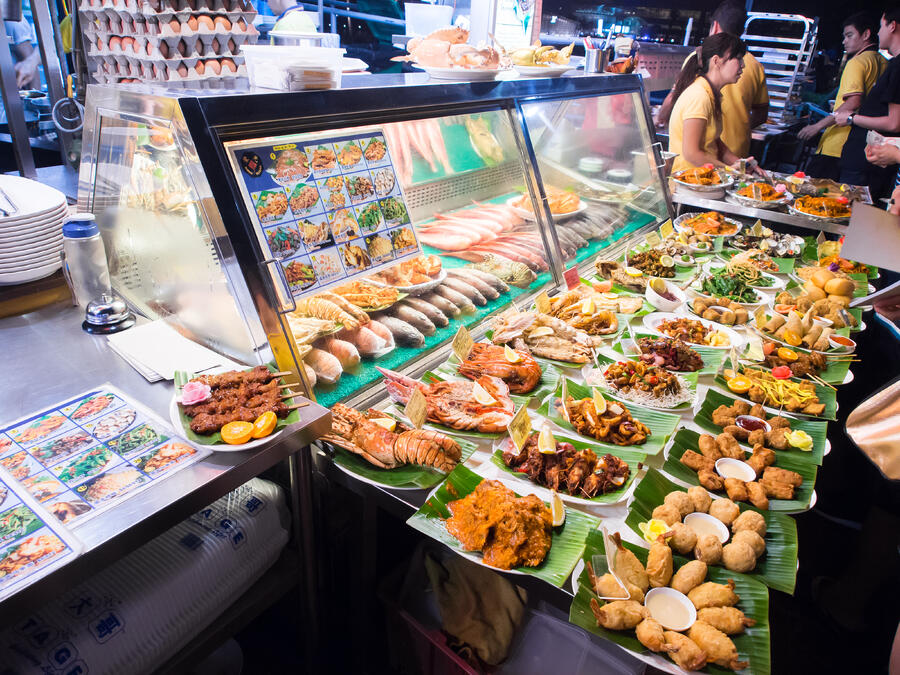
For instance, cosmetic filtering is a common phenomenon that happens with most food retailers. This practice is exactly what it sounds like, where foodstuffs are filtered and selected based on how edible or appealing, they look. Items that fail to meet the aesthetic standards of the chefs or retailers are discarded without reaching the shelves. A study revealed that stall owners at a wet market dispose of up to 30,000 kilograms of unwanted vegetables and fruits every day based on this very reason[3].
Another top avenue for food waste boils down to the improper inventory management of food stock by restaurants and chefs. This occurs most commonly when restaurants overorder more food than what is required, to avoid running out of food during service.
Finally, food waste is something that happens in our households as well. According to a study conducted by the NEA and the Agri-Food and Veterinary Authority of Singapore (AVA), the top three reasons people at home threw food away was because “it had expired, gone mouldy, or that it looked, smelled or tasted bad”[4], which caused many Singaporeans to throw away food that may still be safe for consumption.
Why is Food Waste a Problem?
As more food is wasted each year, an increased amount will also have to be sourced to meet the growing and misrepresented demand for food within our nation. This directly places a greater amount of stress on Singapore’s food security goals, where local food producers such as our ChangeMakersSG Comcrop, are striving to meet 30% of the country’s nutritional needs by the year 2030.
Aside from having to meet a growing demand for food, Singapore is also being forced to step up its waste disposal systems to efficiently dispose and incinerate the large volumes of food wasted every day. The incinerated food is then added on to our landfills, which when buried and broken down, emits methane – a greenhouse gas known to contribute towards global warming[4].
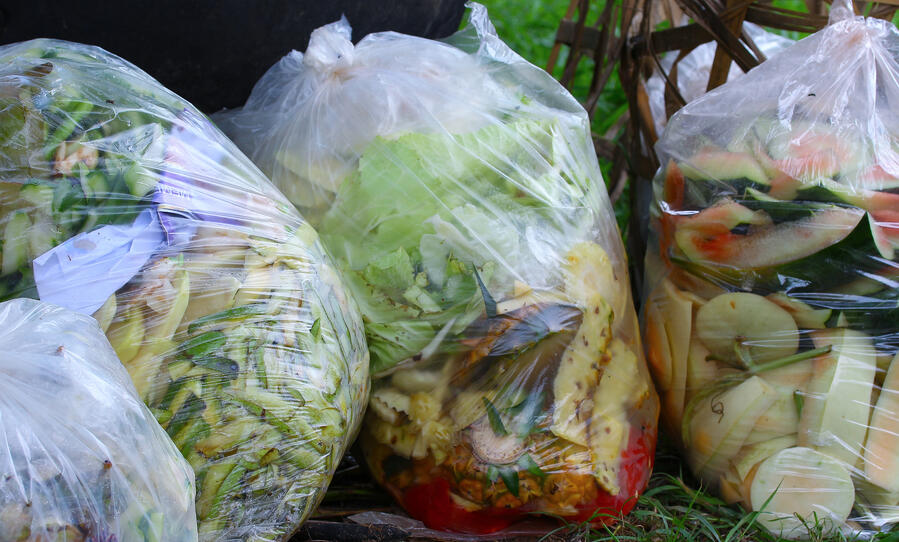
Lastly, each step of the food supply chain involves a huge amount of resources and processes, such as food production, storage, and transportation, with each activity leaving its own carbon footprint on the planet. By consuming and wasting more food than we need, we are therefore heightening our planet’s crisis of climate change.
What Can I Do?
To better minimise food waste at home, you can begin by simply being careful to only purchase what your household needs. In doing so, you avoid having to throw away spoiled food, or grapple with whether a certain food item can still be eaten or not. On top of that, try exploring the option of using your leftovers to transform them into new dishes for the next meal, instead of being so quick to throw your excess dinner away.
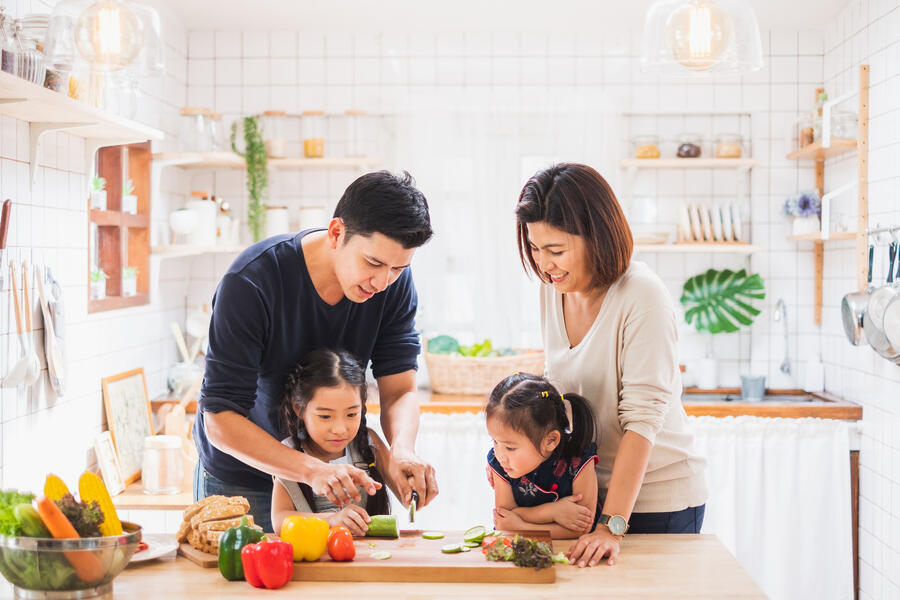
Finally, in the event where you have excess food that you know you won’t be able to finish, you can donate them to the various charities and non-profit organisations that will put your food to better use. One of Geneco’s ChangeMakers The Food Bank Singapore, specialises in redistributing food that has been rejected by food retailers and manufacturers due to cosmetic reasons, giving them instead to the less privileged communities in Singapore who grapple with food insecurity every day.
While Singapore’s food waste issue is not one to be taken lightly, there are plenty of efforts, initiatives, and resources around for us to educate ourselves about regarding this issue. However, more than just looking at the solutions we have, the key to a long-term solution lies in adopting a different, better mindset on how food can be consumed, and conserved.
Everyone has a part to play, and with food being an integral part of each of our lives, the change can always be started within ourselves.
References:
- [1] Towards Zero Waste, Food Waste
https://www.towardszerowaste.gov.sg/foodwaste/ - [2] NEA, Food Waste Management
https://www.nea.gov.sg/our-services/waste-management/3r-programmes-and-resources/food-waste-management#:~:text=Food%20waste%20accounts%20for%20about,(WTE)%20plants%20for%20incineration. - [3] Tan, J (2017, January 20) Singapore: throw-away nation
https://www.straitstimes.com/singapore/singapore-throw-away-nation - [4]Elangovan, N (2019, September 10) Trash Talk: The battle of the food waste bulge — why you should throw away less food
https://www.todayonline.com/features/trash-talk-battle-food-waste-bulge-why-you-should-throw-away-less-food
Image Credits: Nylon Coffee Roasters
Source: The Sustainability Project
A beginner’s guide to plant-based eating!
- Home
- Residential
- Archive by Category "Blog" (
- Page 8 )
[Post Date]
A beginner’s guide to plant-based eating!
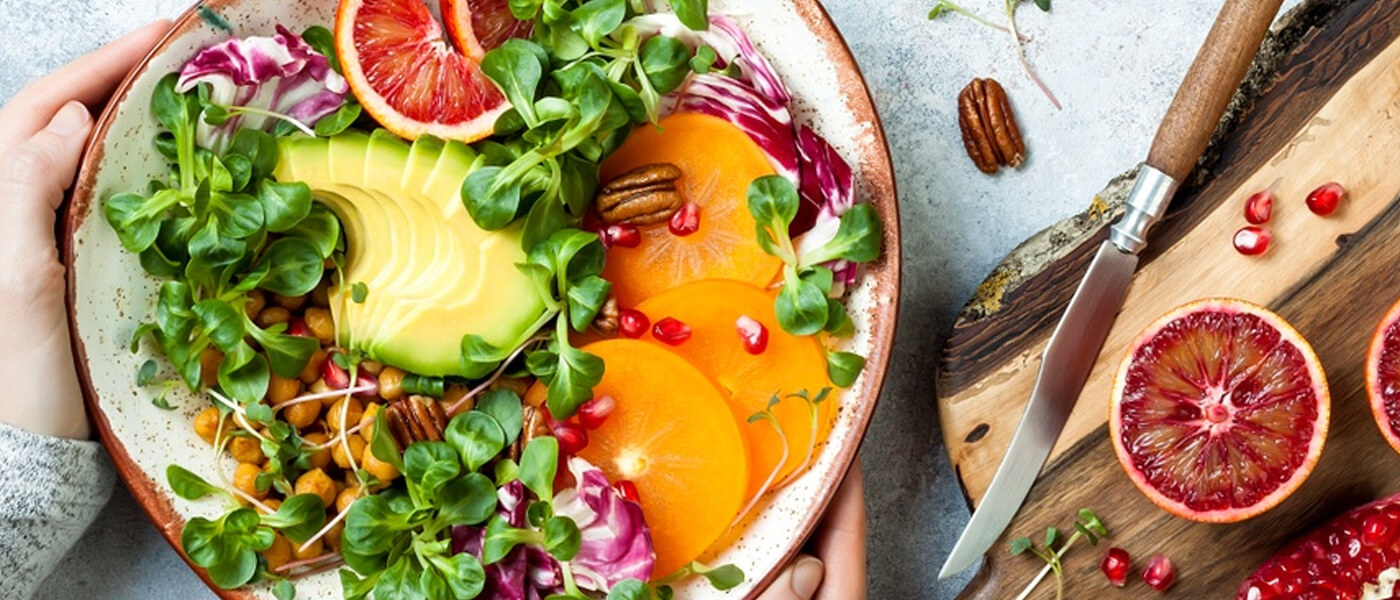
Sustainability is no longer just a trend, but a lifestyle choice for many people. As more consumers choose to switch from single-use plastics to reusable options, or opting for eco-friendly products as part of their daily routine, there are many other ways for individuals to lead a more sustainable lifestyle. A method few may have considered is switching to plant-based eating.
Does plant-based eating means that you have to abstain from meat? We clear the air and answer some of these questions as part of our beginner’s guide to plant-based eating. You will be surprised that it may be easier than you think!
What is a plant-based diet?
A plant-based diet essentially emphasises on food such as vegetables, fruits, whole grains and legumes, while at the same time, limiting your intake of meats, dairy and eggs. It really depends on how strict an individual wants to be in terms of the diet and what will be the best fit depending on health needs and daily lifestyle.
Some may opt to completely axe animal food products if they prefer, while others might just reduce their intake depending on their own interpretation of a plant-based diet. The beauty of it is that meat and seafood do not necessarily need to be off-limits, instead you can make conscious efforts to cut down on how often you consume those items.
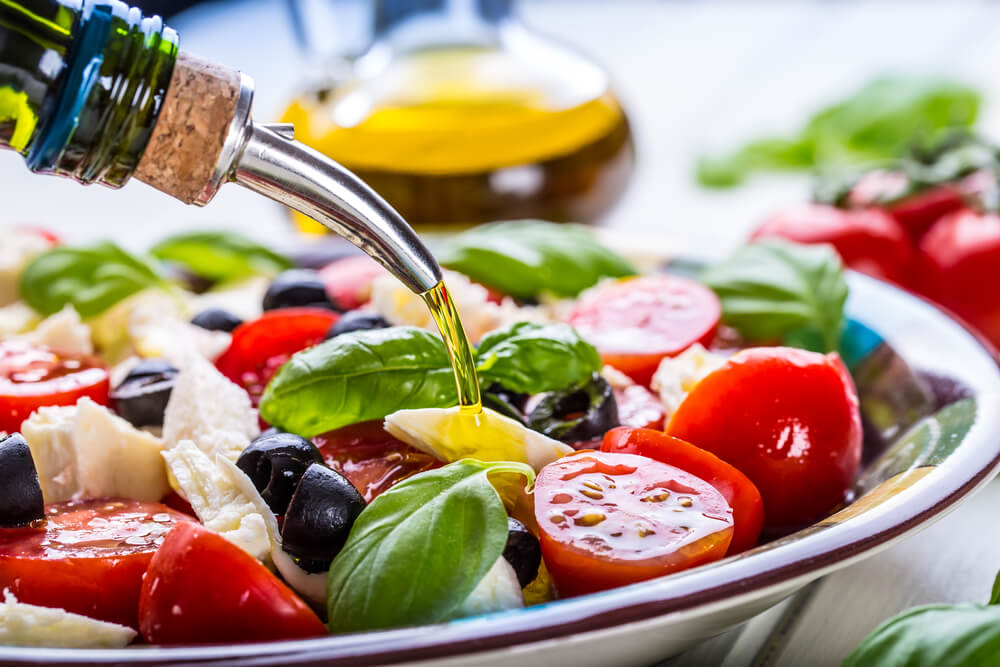
There are a range of diet options that fall under plant-based diets. Some of these examples include:
Pescatarian diet
A pescatarian diet involves eating fish and seafood as a main source of protein, together with vegetable and plant-based foods.[1]
Mediterranean diet
A Mediterranean diet focuses on fruits, vegetables, and whole grains, and it includes consuming less dairy and meat.[2]
Vegetarian diet
A vegetarian diet is a meat-free diet. Depending on the individual, some will include eggs and dairy within their diet requirements.[3]
Vegetarian diet
A vegan diet excludes all animal-based foods.[4]
Benefits of a plant-based diet
There are several benefits when choosing to incorporate a plant-based diet into your daily life. One of the most apparent change will be how it impacts your health. According to Harvard University’s health blog, it states that plant-based diets such as the Mediterranean diet, shows lower risk of chronic diseases, certain cancers, depression and frailty in older age. [5] Beyond preventing diseases, plant-based diets are also effective for treating obesity and boosting energy levels. [6]
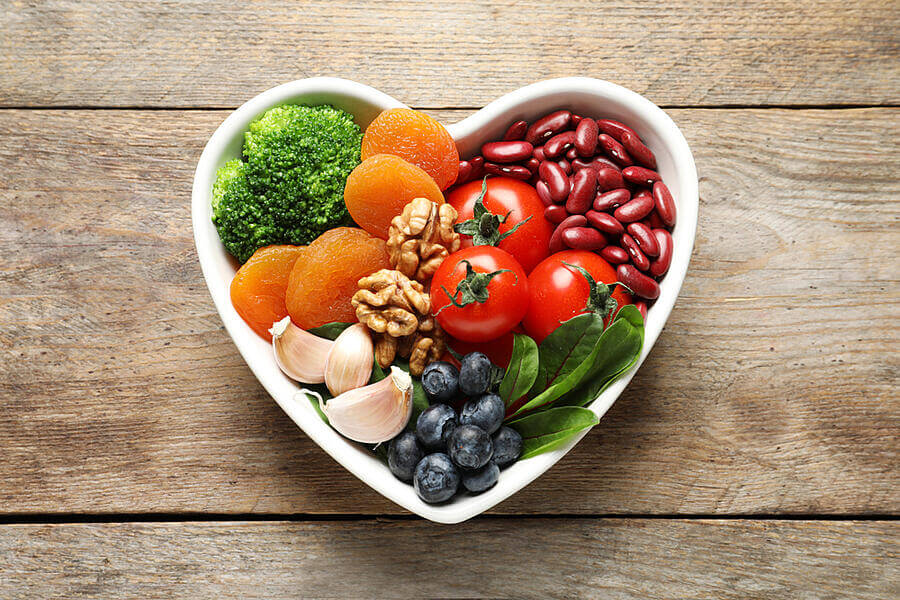
Plant-based diets are also better for the environment. Unknown to most people, what we choose to eat makes up a huge proportion of our impact on the environment. Cattle grazing contributes to climate change by producing a lot of gas such as methane and CO2. The United Nations Food and Agriculture Organisation (FAO) estimates that livestock production is responsible for 14.5 per cent of global greenhouse gas emissions. [7] The Worldwatch Institute have even mentioned that this figure could be as much as 51 per cent.[8]
With a significant amount of global emissions coming from animal products, our small choices in diet plays a huge role in helping combat climate change.
Taking the first step towards a sustainable diet
If you are convinced on wanting to move towards a plant-based diet, you might not know where or how to start, especially with so much information available out there.

Here are some additional tips and tricks to ensure a smooth transition to a plant-based diet!
1. Start with a small change:
Instead of jumping straight in and completely eliminating meat from your diet, choose to start with 1 day a week to lower your animal food intake. Meatless Monday is a global movement which encourages people to not eat meat on Mondays in a bid to protect the environment and improve one’s health. Once you are well adjusted with this, slowly increase this habit to 2-3 times a week.
2. Explore your food options:
In Singapore, there are plenty of food options out there that can come in place of meat. From mock meat to mushrooms and even legumes, choosing a plant-based diet can exercise some creativity on how you can keep those meat cravings at bay and gain the required protein from other alternatives.
3. Plan your meals and cook at home
By planning your meals for the week and making them on your own, it is certainly helpful in sustaining plant-based eating for the long haul. This is a great habit to keep where not only does it help you to stick to this commitment, but also ensures your food waste is reduced. In addition, it also gives you a chance to experiment in the kitchen and attempt new plant-based recipes you may have never tried!
Plant-based recipes to get you started
To help you kick-start on this journey, one of Geneco’s ChangeMakers Cultivate Central, have put together plant-based recipes that you can try at home using microgreens you may have grown in your own home garden.
- Quinoa, daikon, radish microgreens and tapioca salad
- Tanghoon soup with buckwheat microgreens
- Raita with sunflower microgreens
A plant-based diet really is not as daunting as it seems and can be attempted by anyone. The key is to start small and to find a flexible diet that you are comfortable with as you choose to reduce your animal product intake. While everyone has their own reasons for adopting it, the benefits it brings to our environment and fighting climate change is undeniable. Many alternatives that can help to build a compromise to enable everybody to take action for the environment, exist through their dietary choices.
References:
- [1] Crichton-Stuart , C (2018, December 6) What is a pescatarian diet?
https://www.medicalnewstoday.com/articles/323907 - [2] Johnson, J (2019, January 18) Our guide to the Mediterranean diet
https://www.medicalnewstoday.com/articles/324221 - [3] Brazier, Y (2020, January 20) What to know about the vegetarian diet
https://www.medicalnewstoday.com/articles/8749#foods - [4]Brazier, Y (2020, January 20) What to know about the vegetarian diet
https://www.medicalnewstoday.com/articles/8749#foods - [5] MacManus, K.D. (2018, September 2016) What is a plant-based diet and why should you try it
https://www.health.harvard.edu/blog/what-is-a-plant-based-diet-and-why-should-you-try-it-2018092614760 - [6] Sissions, B (2019, August 29) Everything you need to know about plant based diets
https://www.medicalnewstoday.com/articles/326176#benefits - [7] Key facts and findings
http://www.fao.org/news/story/en/item/197623/icode/ - [8] Surprising Sources of Air Pollution: 6 Ways Animal Farms Contribute to Poor Air Quality
https://gasp-pgh.org/2020/05/13/surprising-sources-of-air-pollution-6-ways-animal-farms-contribute-to-poor-air-quality/
Image Credits: Nylon Coffee Roasters
Source: The Sustainability Project
Kid-Friendly Activities to Teach your children about Sustainability
- Home
- Residential
- Archive by Category "Blog" (
- Page 8 )
[Post Date]
Kid-Friendly Activities to Teach your children about Sustainability
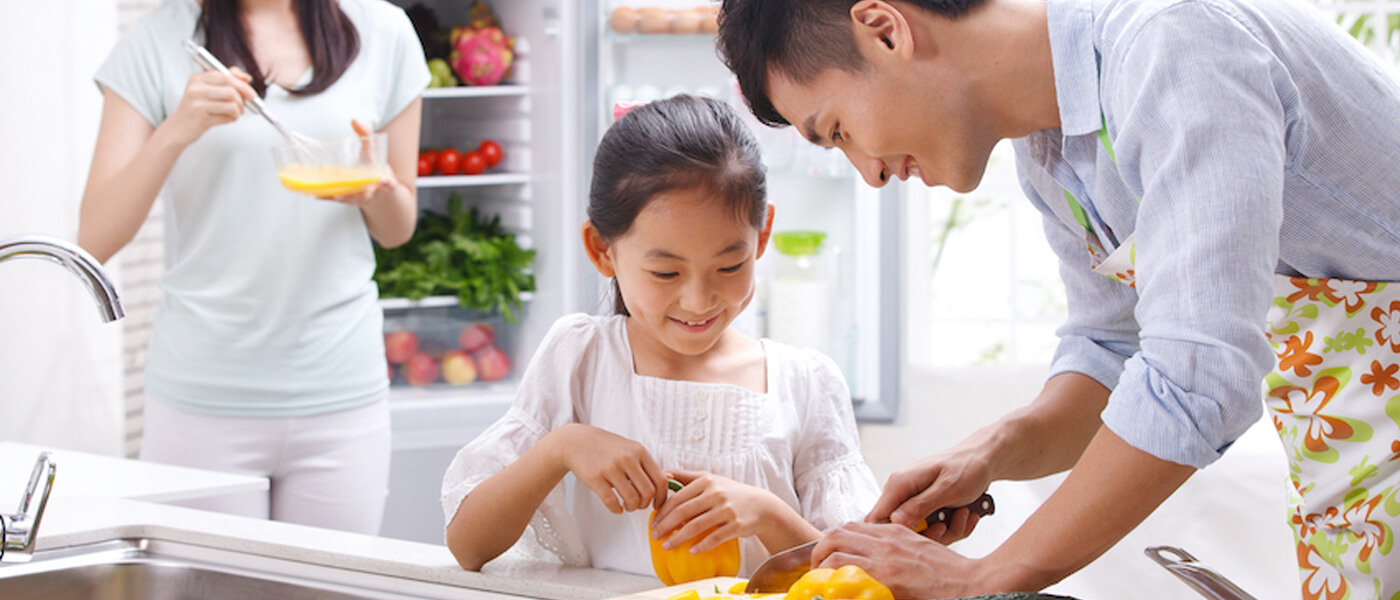
The journey towards becoming environmentally conscious often starts at home, and what better way to get your family to understand the importance of sustainability than inculcating green habits from young? How can we help our kids understand the impact we have on the planet, as well as the responsibility we have to conserve the environment for our future generations?
Fortunately, being sustainable includes lots of activities such as recycling and gardening, for our kids to try their hands on. With the activities suggested below, you’ll be able to guide your children and even yourselves towards a better understanding of how and why it is important to love and protect our planet.
Plant It, Grow It, Eat It!
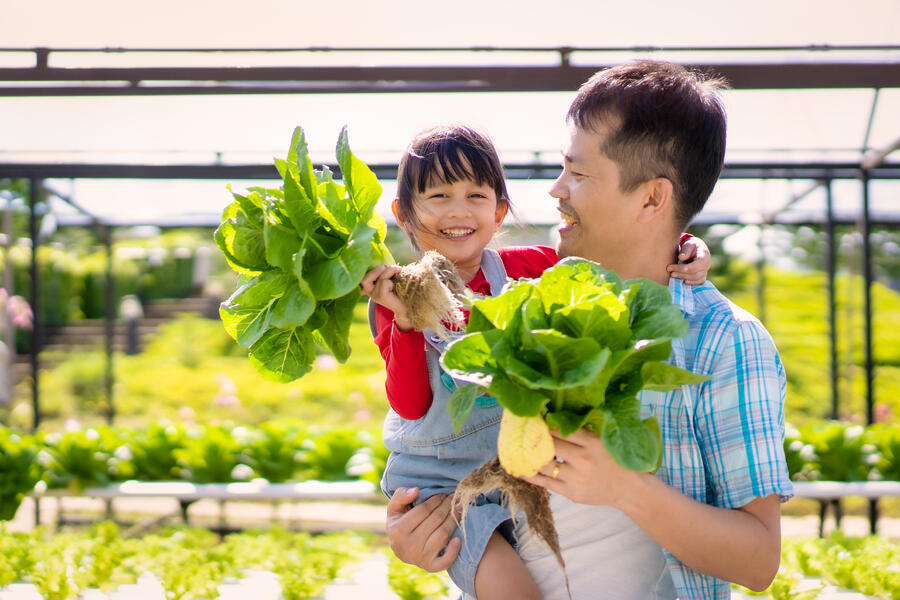
Let your kids have a sense of ownership and accomplishment through a hydroponic garden! Not only does growing your own vegetables at home promote healthier eating within the household, a home garden will also serve as an excellent classroom for your children to learn about the effort required to grow their own food, hence teaching the important lesson of food conservation!
Additionally, hydroponic gardens require less water and space and hence are also better suited for growing in a smaller room. By removing the hassle of soil that comes with traditional gardens, this wholesome project serves as a great, convenient activity you can conduct with your kids for the many weeks to come.
Upcycling Clothes at Home
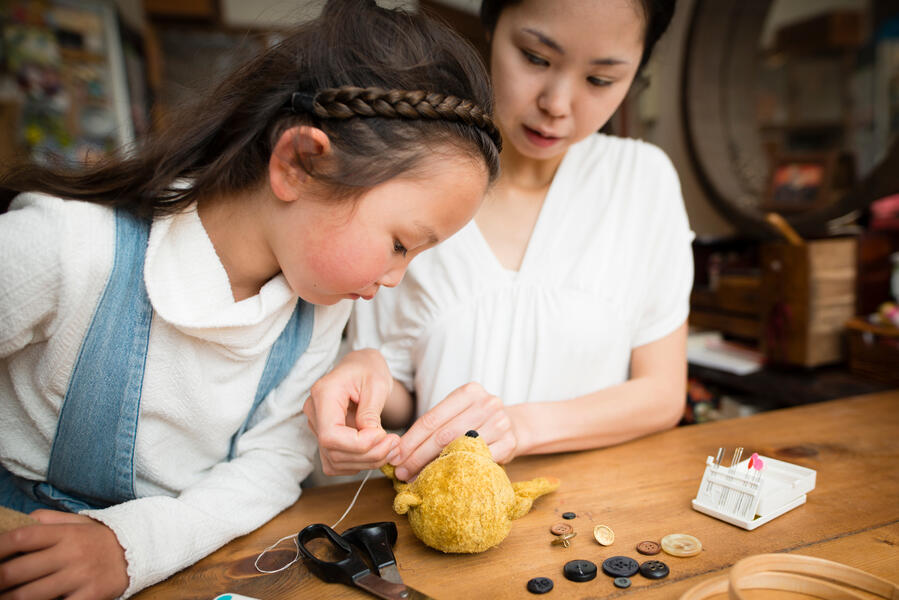
If you don’t feel like you have the green fingers, there is still a plethora of other fun DIY activities for you and the family to do together!
Heard all about upcycling discarded old clothes and other common types of waste at home? Instead of throwing them away at the nearest recycling bin, why not give them a second lease of life by upcycling them?
One simple activity you could try out is to make use of old pieces of clothing that you or your children may have outgrown from over the years. Take the opportunity to repurpose them into handy household objects, such as floor mats, wiping rugs, and or even cushion covers. By doing so, you get to be cost-efficient by making the use of your existing items at home, whilst reducing the amount of waste produced by your family.
For some ideas on how to get started on this project, take a look at our Instagram post here for some inspiration on how you can upcycle other textiles at home. Just remember to handle the scissors and needles with care around the kids!
Making Your Own Household Products

Taking it a notch higher, look beyond repurposing textile goods and consider making your own household products from scratch together as a family. Yes, we mean products such as soap, laundry detergent, and even facial beauty products for your very own organic spa!
Concocting these organic products up from scratch may seem like a daunting task at first but the benefits that come with creating it far outweighs the minor challenges. Firstly, you get to control exactly what ingredients go into each of these products, which means you can easily avoid substances or chemicals that you or your children may be sensitive to. Aside from just using healthier products, you also stand to be much more environmentally friendly and cost-efficient by making your own household products at home!
If this activity sounds like the perfect thing to do over weekend doing with your kids, we’ve also got a mini tutorial on our Instagram page to show you how you can create various beauty products with just a couple of natural fruits and ingredients. Visit the link here to find out more.
Creating a Compost Heap at Home
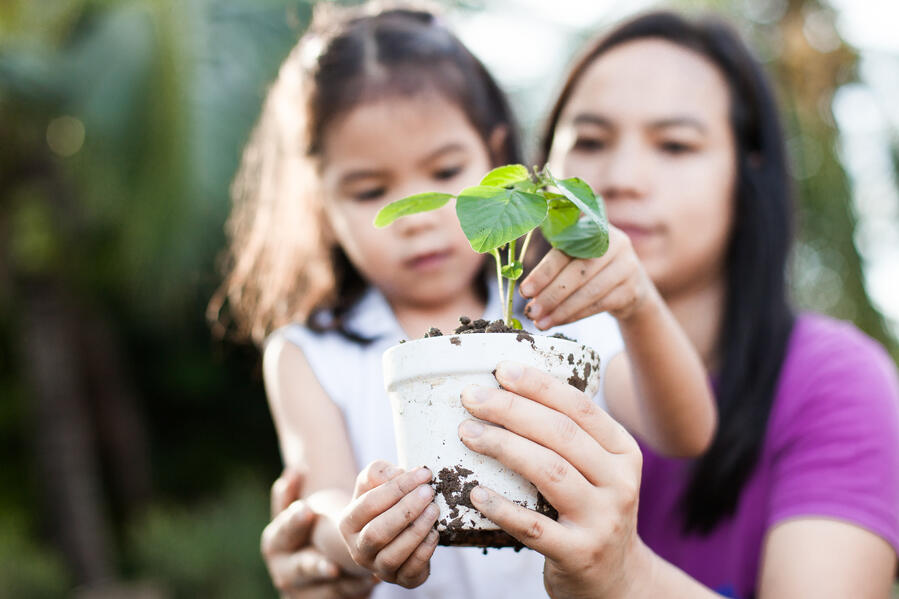
Want to be even more hands-on and get them dirty? Then why not try building your own compost heap at home? Not only is this an environmentally friendly way to get rid of excess food at home without wasting it, your kids are sure to have a great deal of fun watching and learning about the composting process right from the comfort of their own homes.
All you need to get started with are simple materials such as plastic bin, some soil and paper waste, water and you’re all set!
Simply drop a visit to our #ChangeMakersSG Cultivate Central’s blog for more detailed instructions telling you not just how, but why we should get started on composting activities with our children at home today.
Science Lessons for Kids
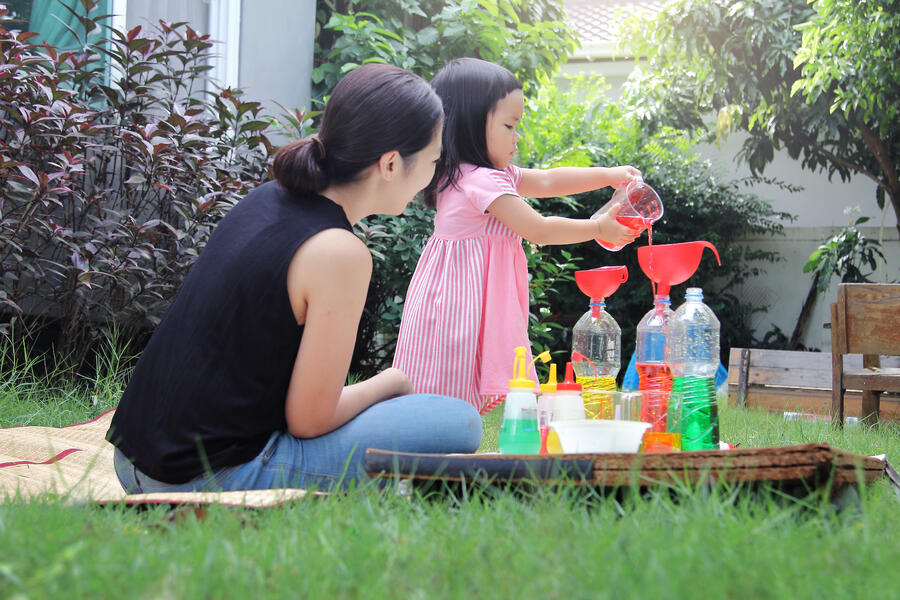
For those with kids who love science, there are also plenty of activities about sustainability for your family to try out to satiate the academic in your child.
One really easy science experiment for younger children is an air pollution experiment. Simply spread some petroleum jelly or Vaseline on a clear plastic surface and expose it to the outside air for 24 hours. At the end of the experiment, you can take the plastic surface down with your child to take a look at the amount of dust particles accumulated on the surface.
Besides making use of this opportunity to hone your child’s scientific and analytical skills, engaging in these science experiments as a family also serve as the perfect conversational starters to talk to your children about various topics concerning environmental conservation.
Activities for Today, Lessons for Tomorrow

With the abundance of resources we have at our disposal, it is vital to not just initiate conversations at home, but also making use of them to educate our children about the various issues concerning our environment.
As we progress as a society, so does the importance of environmental conservation and the onus is not only on us to protect and conserve the environment, but to also inspire and equip the future generations to love and care for a greener and brighter tomorrow.
References:
- [1] Crichton-Stuart , C (2018, December 6) What is a pescatarian diet?
https://www.medicalnewstoday.com/articles/323907 - [2] Johnson, J (2019, January 18) Our guide to the Mediterranean diet
https://www.medicalnewstoday.com/articles/324221 - [3] Brazier, Y (2020, January 20) What to know about the vegetarian diet
https://www.medicalnewstoday.com/articles/8749#foods - [4]Brazier, Y (2020, January 20) What to know about the vegetarian diet
https://www.medicalnewstoday.com/articles/8749#foods - [5] MacManus, K.D. (2018, September 2016) What is a plant-based diet and why should you try it
https://www.health.harvard.edu/blog/what-is-a-plant-based-diet-and-why-should-you-try-it-2018092614760 - [6] Sissions, B (2019, August 29) Everything you need to know about plant based diets
https://www.medicalnewstoday.com/articles/326176#benefits - [7] Key facts and findings
http://www.fao.org/news/story/en/item/197623/icode/ - [8] Surprising Sources of Air Pollution: 6 Ways Animal Farms Contribute to Poor Air Quality
https://gasp-pgh.org/2020/05/13/surprising-sources-of-air-pollution-6-ways-animal-farms-contribute-to-poor-air-quality/
Image Credits: Nylon Coffee Roasters
Source: The Sustainability Project
A day in a life without Plastic
- Home
- Residential
- Archive by Category "Blog" (
- Page 8 )
[Post Date]
A day in a life without Plastic
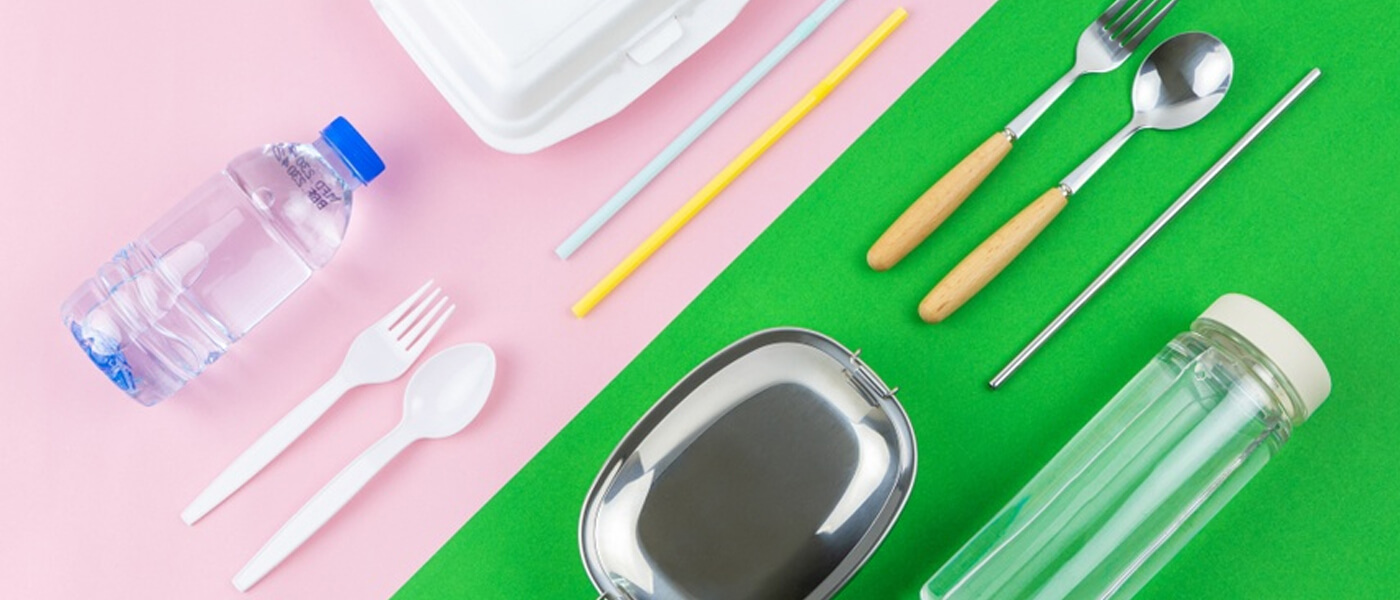
Is it really possible for one to go a day without plastic? While many might think that it may be a challenge, you might be pleasantly surprised that a plastic-free day is very much doable!
As we approach the end of #PlasticFreeJuly, here’s a preview of what a plastic-free day could possibly look like. It’s not too late to start with small simple changes in our everyday routines, and having these changes add up to help us achieve our goal to go plastic-free in the long run!
7am: Ditch that plastic toothbrush and cotton round!
Let’s start the day right with fresh faces and cleaned teeth! Consider eliminating the use of plastic toothbrushes and switch it out for a bamboo one for your morning routine instead. They provide the same quality of cleaning as a plastic toothbrush.
Furthermore, one can easily compost the handles of bamboo toothbrushes, upon removing the nylon bristles, as bamboo decomposes naturally in the environment.[1] Not only will you still be able to keep your teeth fresh and clean, a smaller ecological footprint is left on our planets as well.

Another easy swap you can do include as part of your morning routine is using reusable cotton pads instead of disposable ones. These reusable alternatives work just the same as the disposable version and offer lots of neat advantages as they are durable, absorbent, and easy to clean. Most importantly, it helps reduce waste as a single cotton pad can be used up to 1000 times, compared to cotton pads which are tossed away after one-time usage.[2]
10am: A plastic-free caffeine fix!
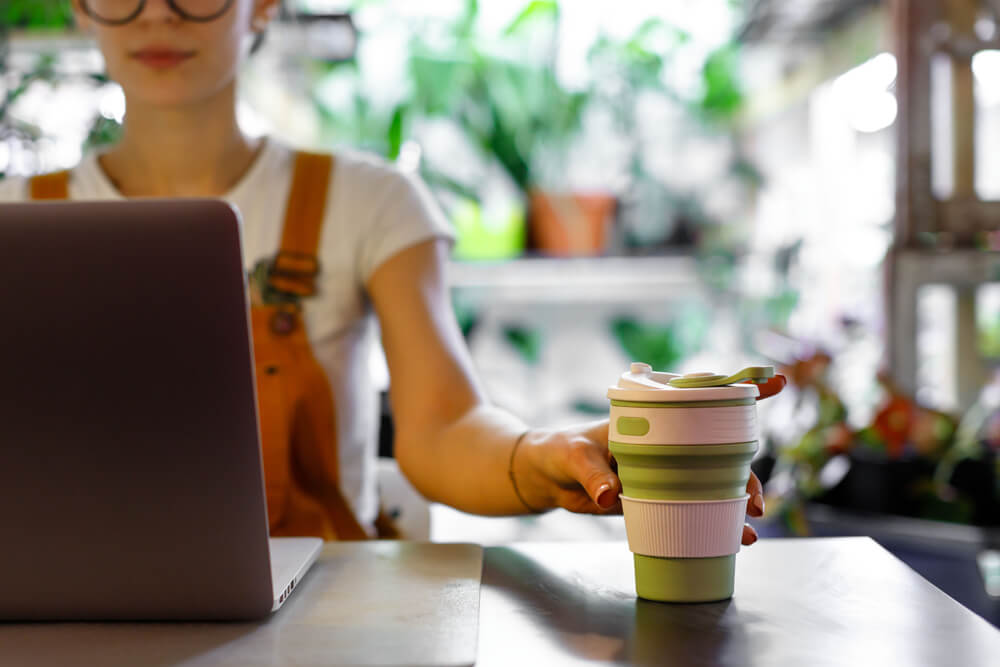
As we jump-start our day, the aroma of a cup of freshly brewed coffee will certainly perk many of us up. Bring along a reusable coffee mug or eco-friendly cup when you get your daily fix from the pantry or the coffee house. If you prefer, you could even bring your own brew from home to the office instead. With every cup of coffee you opt to use your own mug, imagine the number of disposable cups you save from being part of our landfills. Bonus: Many coffee shop locations give you a discount for bringing your own flask.
1pm: Time for a zero-waste lunch
With the lunch crowd often in full force in restaurants and food courts, you might find yourself opting for takeaways at times with your meals coming in styrofoam boxes or disposable containers.
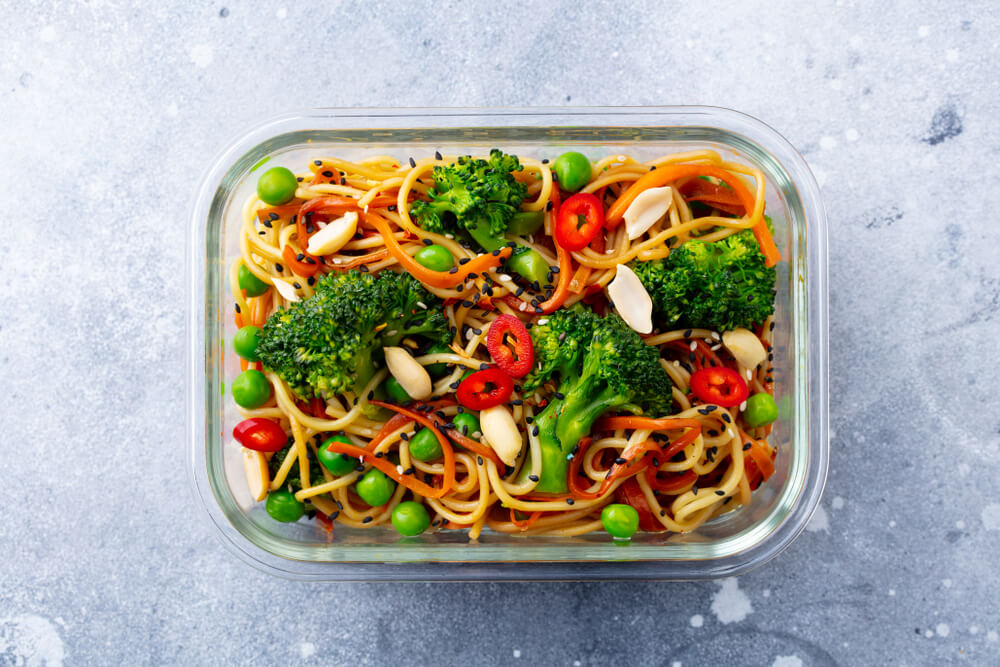
For your next lunch takeaway, bring along a food container to have that meal to go! You can easily keep a spare food container in your office together with a pair of reusable utensils to complete the plastic-free lunch set.
You can even go a notch higher and ignite change by working with your organisation to make such containers available in the office for daily meal takeaways!
4pm: Mid-day treat
With just a couple of hours more till the end of your workday, you might be looking for that sugar rush to help you power through the remaining hours. Bubble tea is one of Singaporeans’ favourite go-to beverage choice and there are ways you can go plastic-free, even when you are getting that much-needed sugar rush!
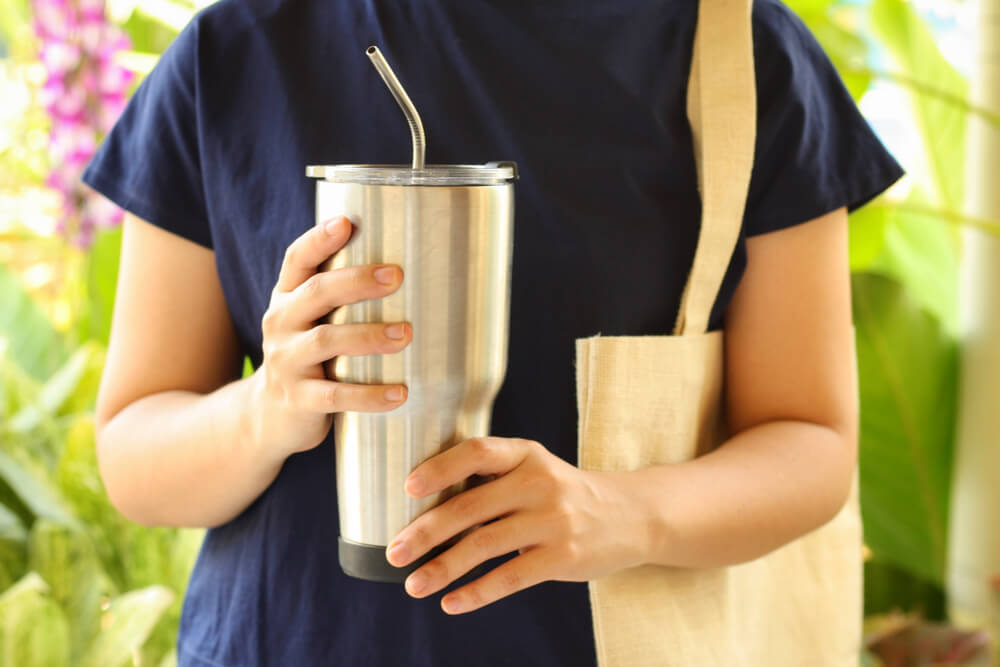
It is as simple as choosing to say no to a carrier when offered at your point of purchase. In fact, take it a step further by having your own reusable straws to enjoy your drink. People in Singapore use about 2.2 million straws daily [3] and a good first step we can all do is to say no to all straws offered.
8pm: An all-natural shower to end off your day
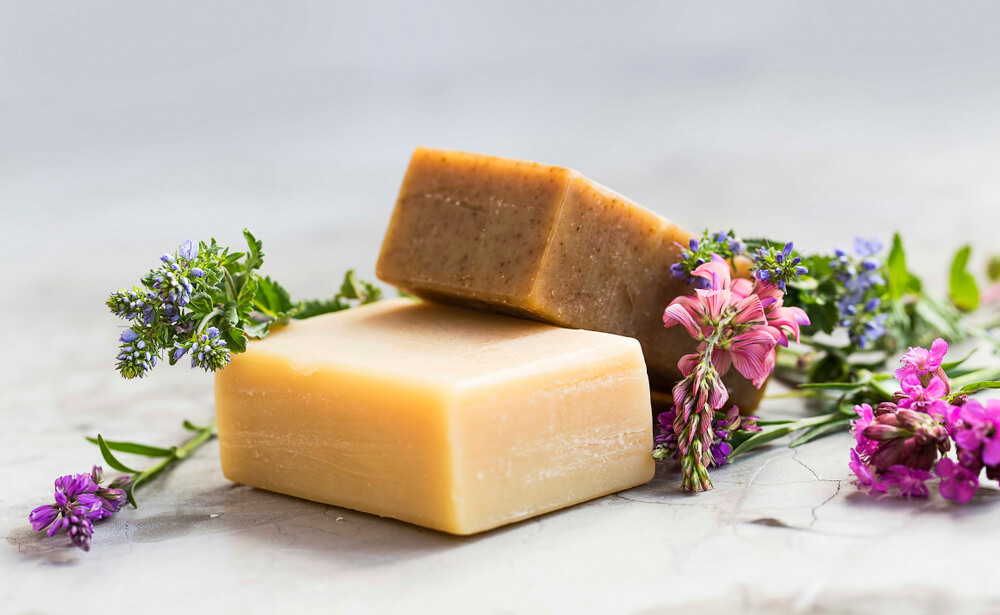
What better way to wind down at the end of the day than with a good shower at home. Why not replace plastic bottles of soap and shampoo with bar soaps in your own bathroom as part of your plastic-free experience? What’s more, there are specially made soaps in the market that can are meant just for your hair or even cater to various skin needs such as Eczema or Rosacea.
Plastic-free daily routine
Start out by switching one habit a day. It may seem challenging at first, but over time with consistent effort and practice, the plastic-free habit will become second nature. Our small actions to promote a plastic-free or plastic-less world can create big impact if we stick to them with conviction! Be a part of the #PlasticFreeJuly movement with Geneco and share with us on how you go plastic-free in your everyday routines. You can even get rewarded just for your plastic-free practices!

With the abundance of resources we have at our disposal, it is vital to not just initiate conversations at home, but also making use of them to educate our children about the various issues concerning our environment.
As we progress as a society, so does the importance of environmental conservation and the onus is not only on us to protect and conserve the environment, but to also inspire and equip the future generations to love and care for a greener and brighter tomorrow.
References:
- [1] Kashinsky, M. (2020, February 27) What are the benefits of using a bamboo toothbrush?
https://bamboodetective.com/what-are-the-benefits-of-using-a-bamboo-toothbrush/ - [2] Gonzalez, D. (2019, March 5). A Sustainable Alternative To Cotton Rounds That's Just As Easy To Use. Huff Post.
https://www.huffpost.com/entry/a-sustainable-alternative-to-cotton-pads-thats-just-as-easy-to-use_l_5ccb200ce4b0913d078e6a4d - [3] Mohan, M. (2019, June 8) Phasing out plastic straws helps the environment, but more needs to be done, say observers
https://www.channelnewsasia.com/news/singapore/phasing-out-plastic-straws-helps-the-environment-but-more-needs-11605108
Image Credits: Nylon Coffee Roasters
Source: The Sustainability Project
